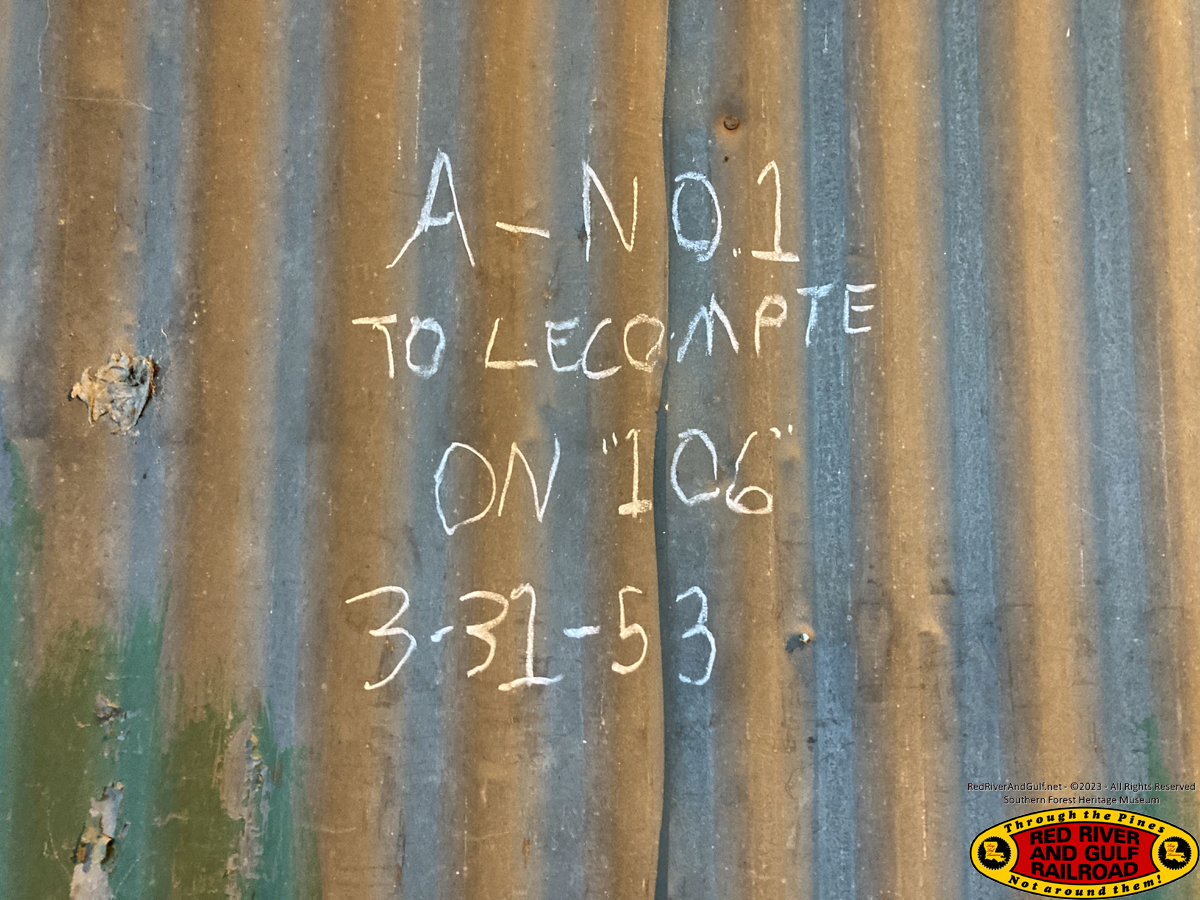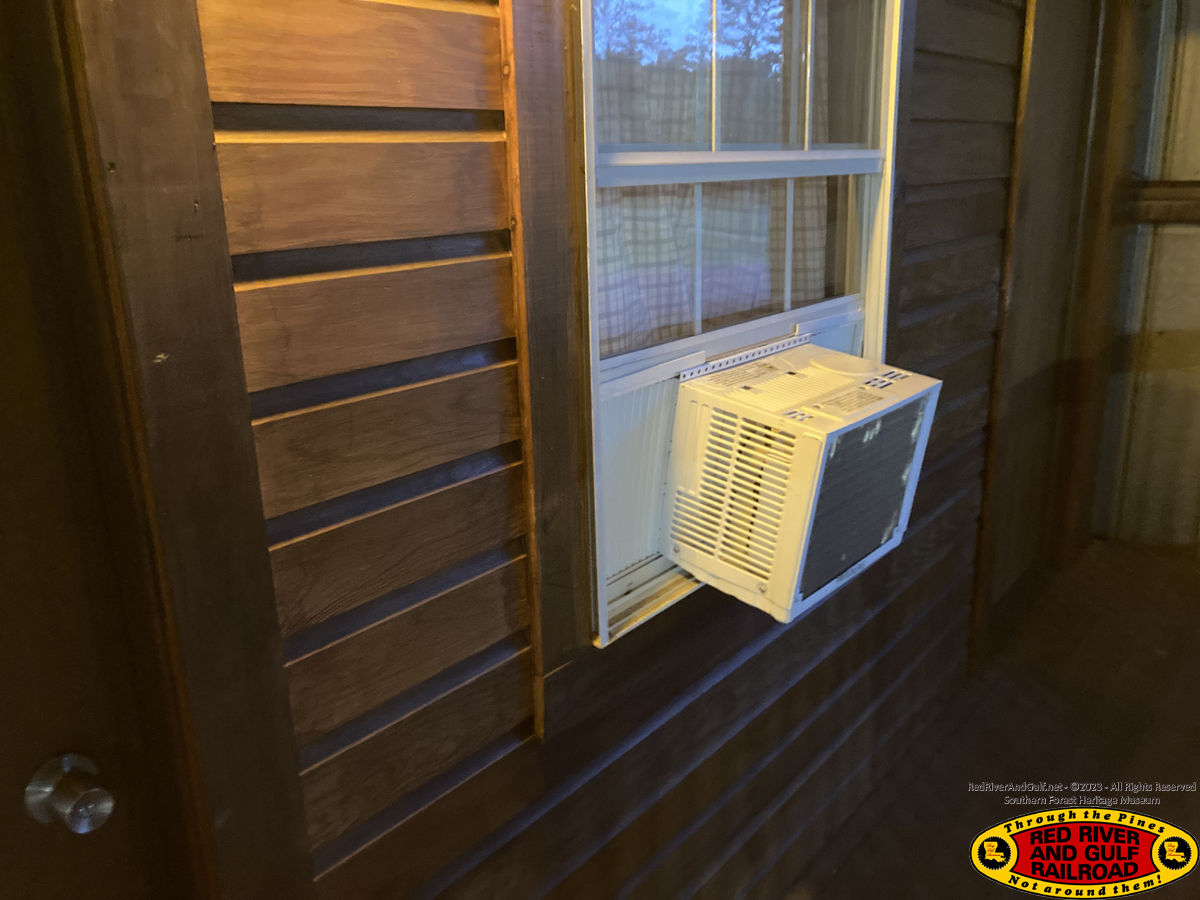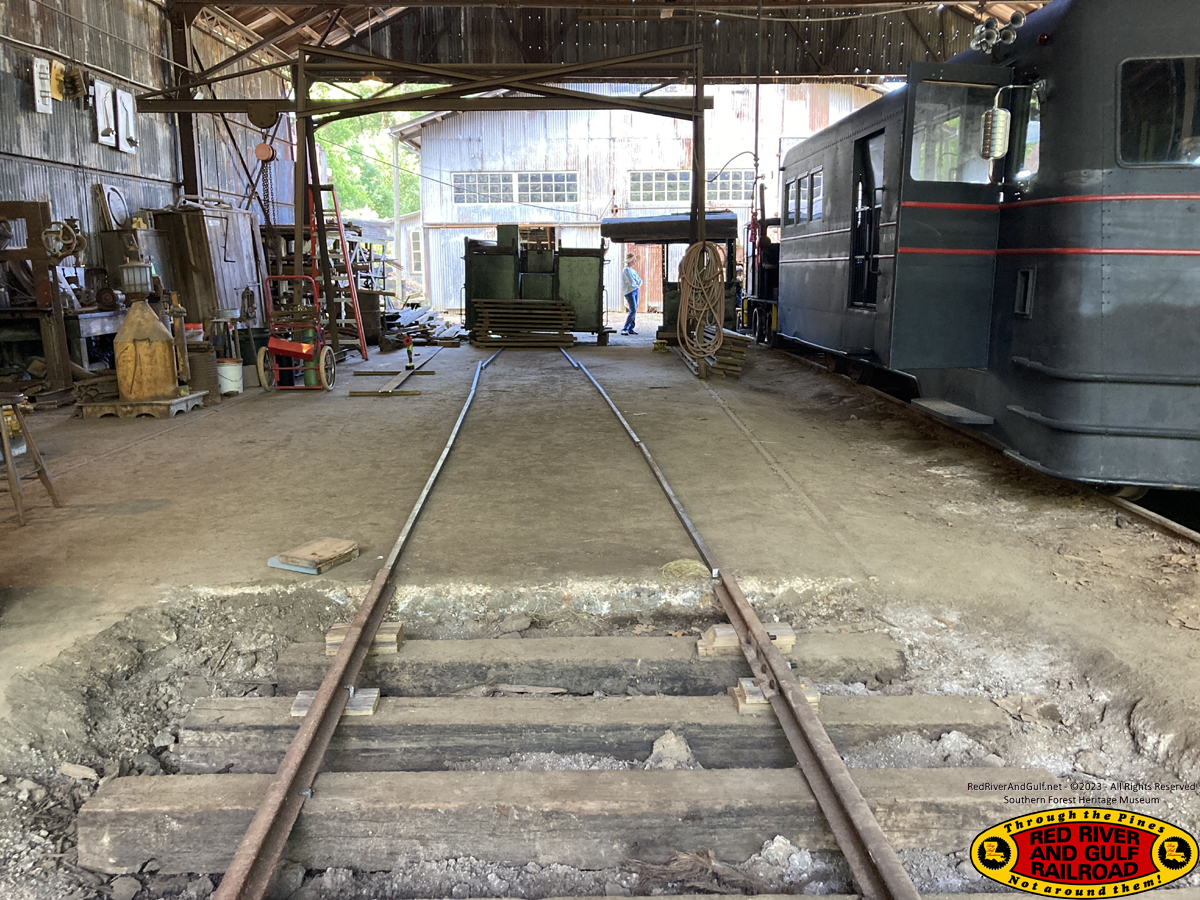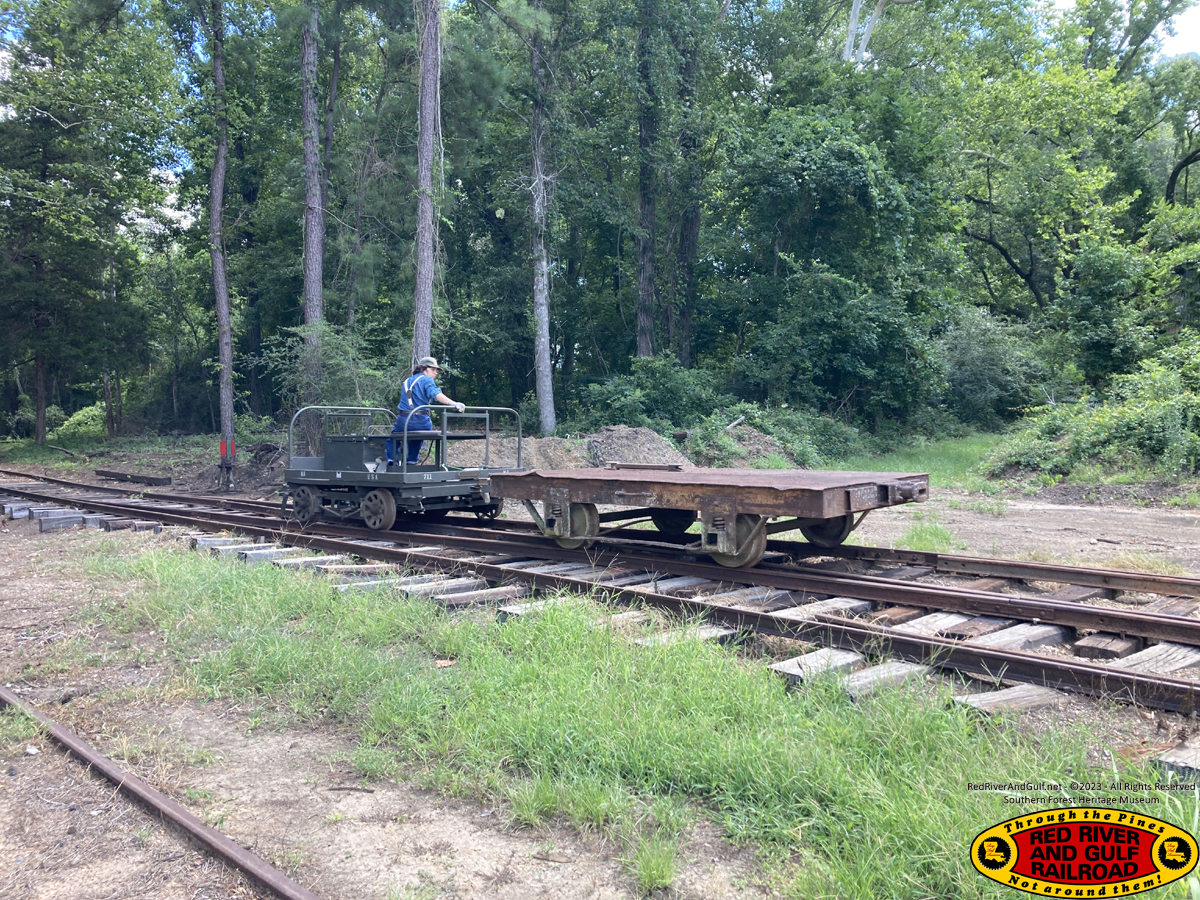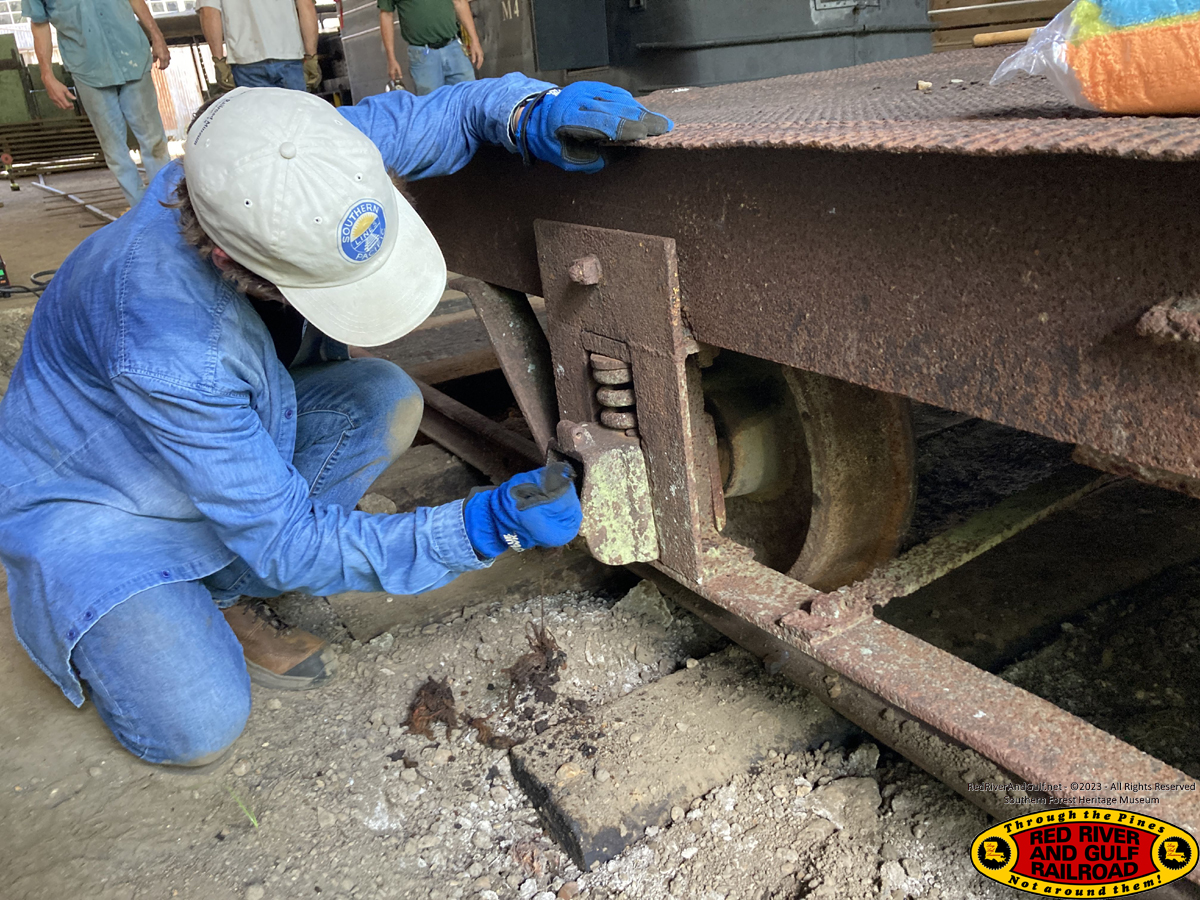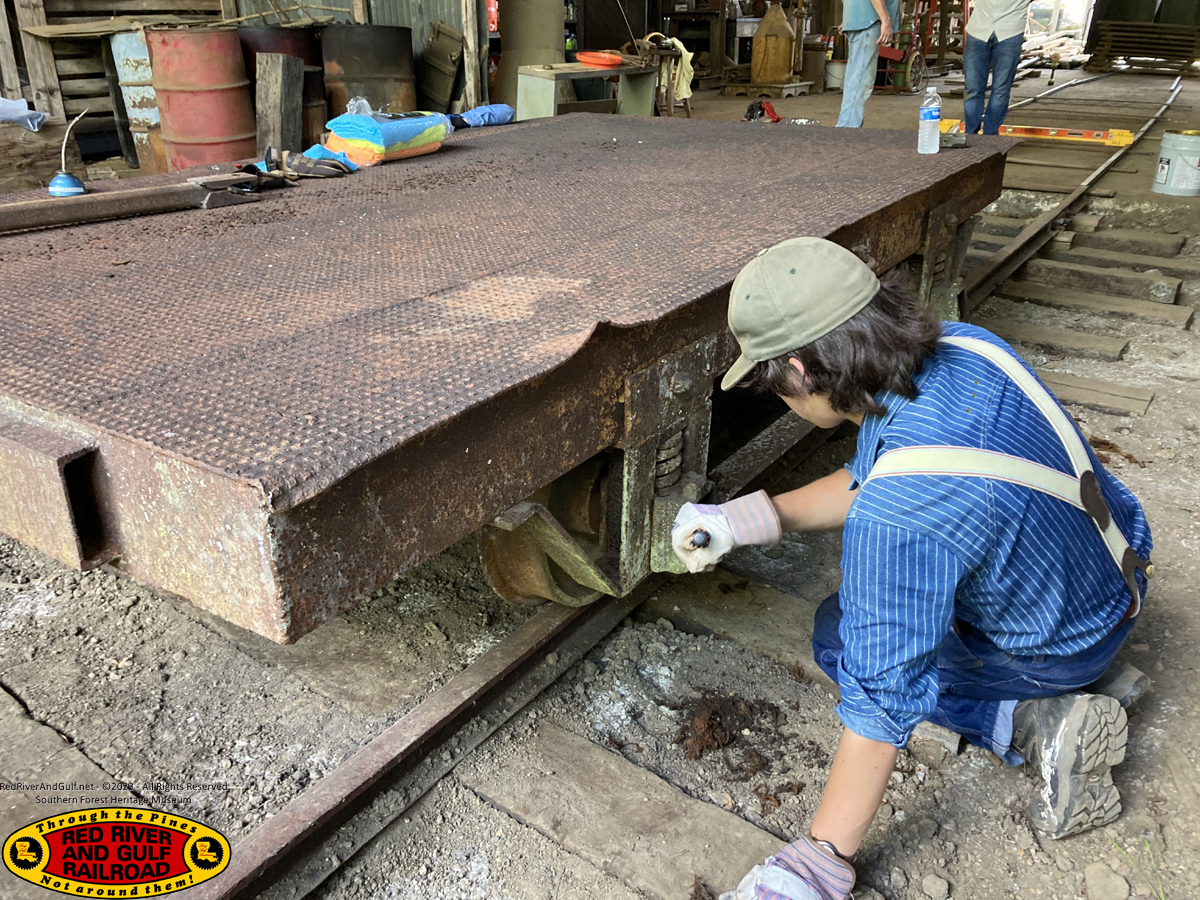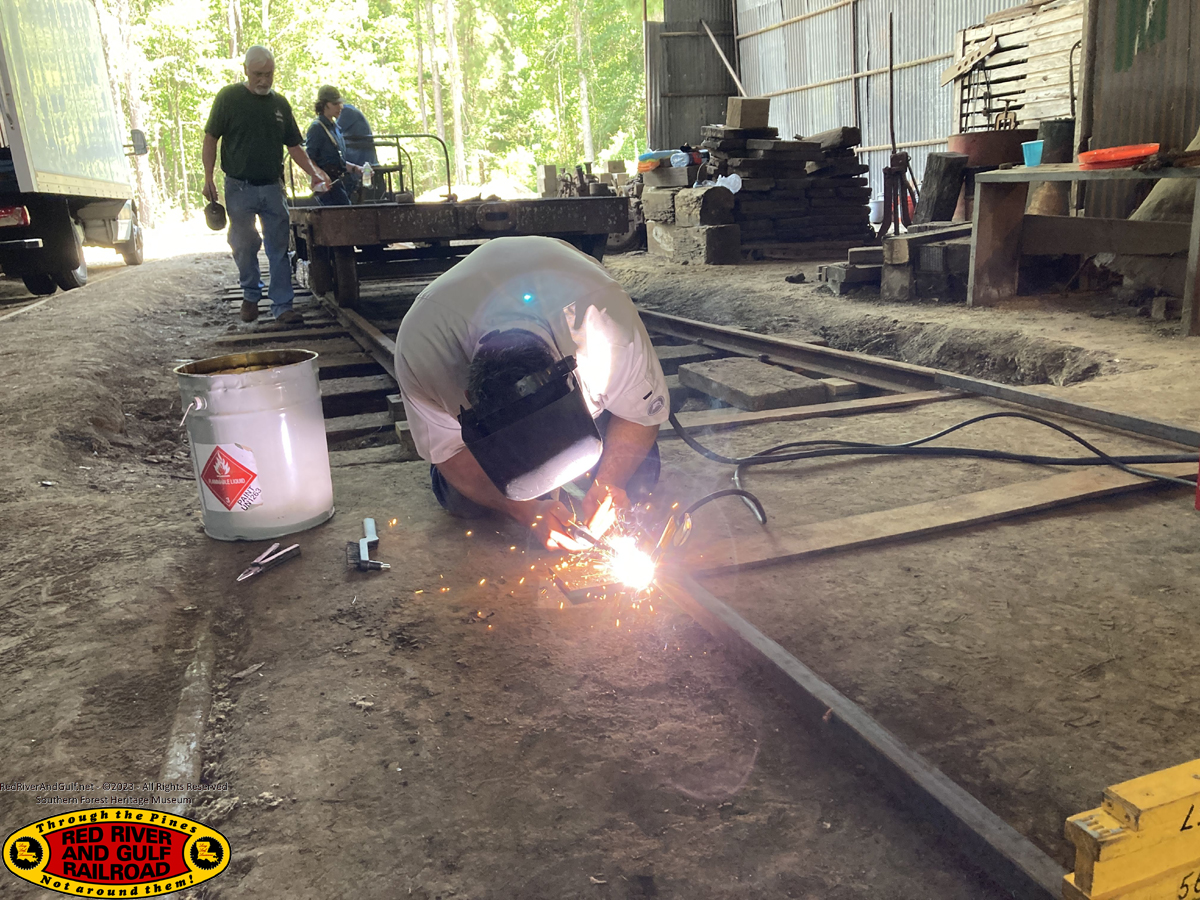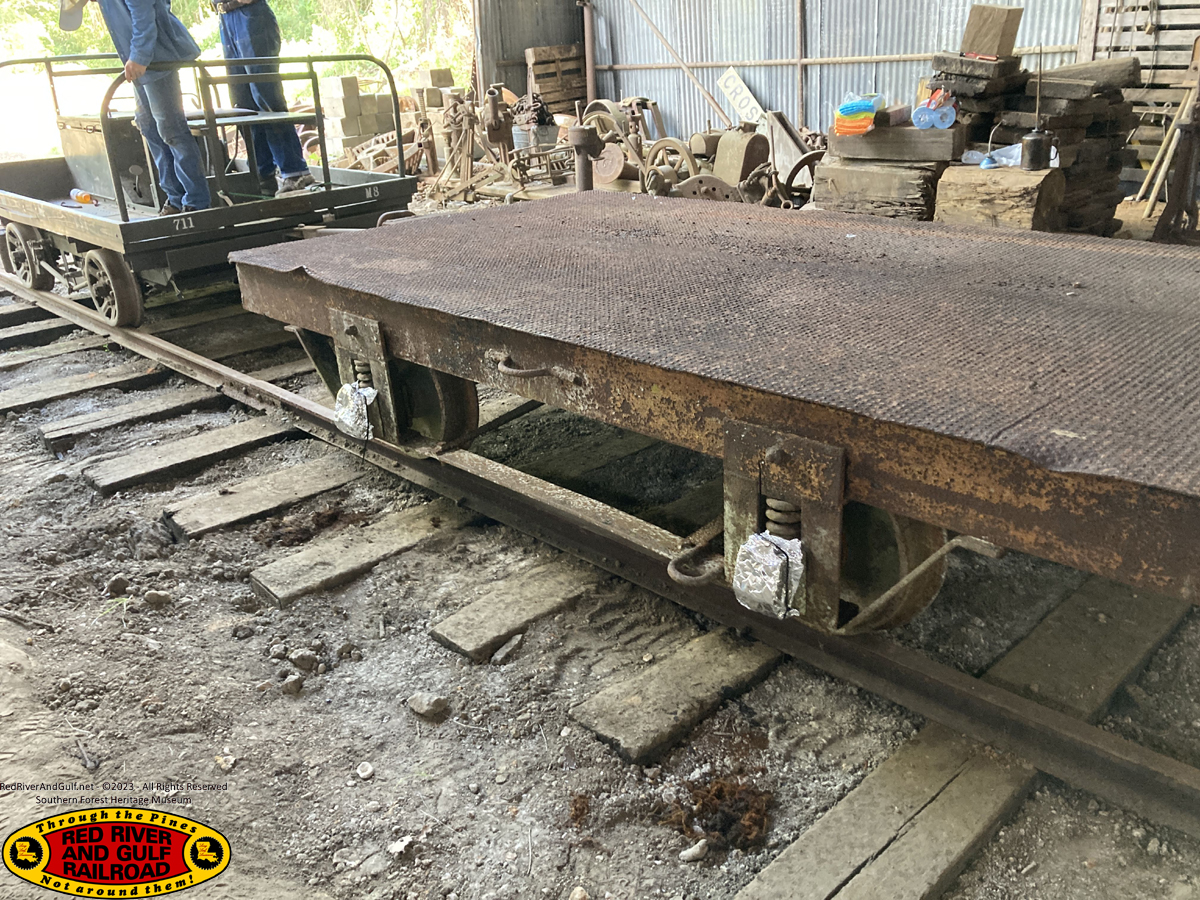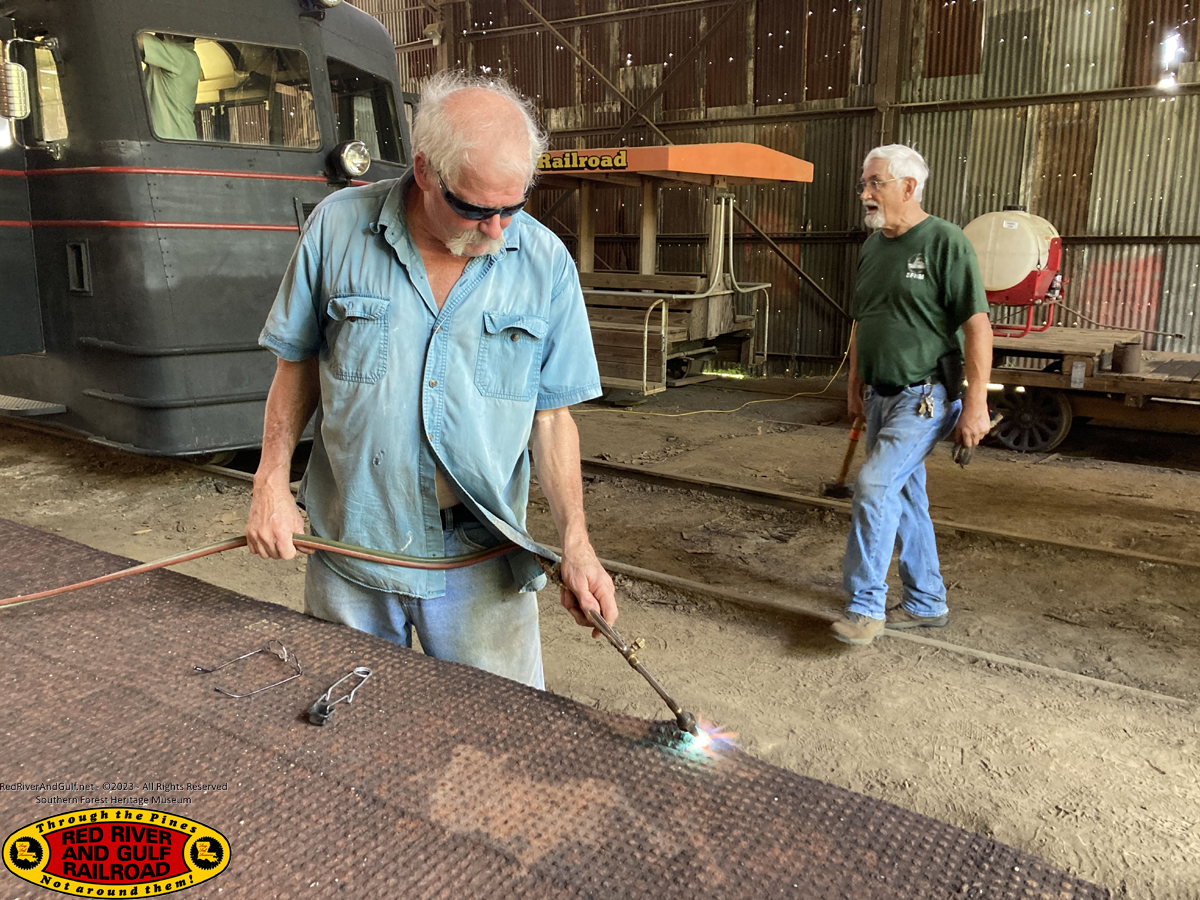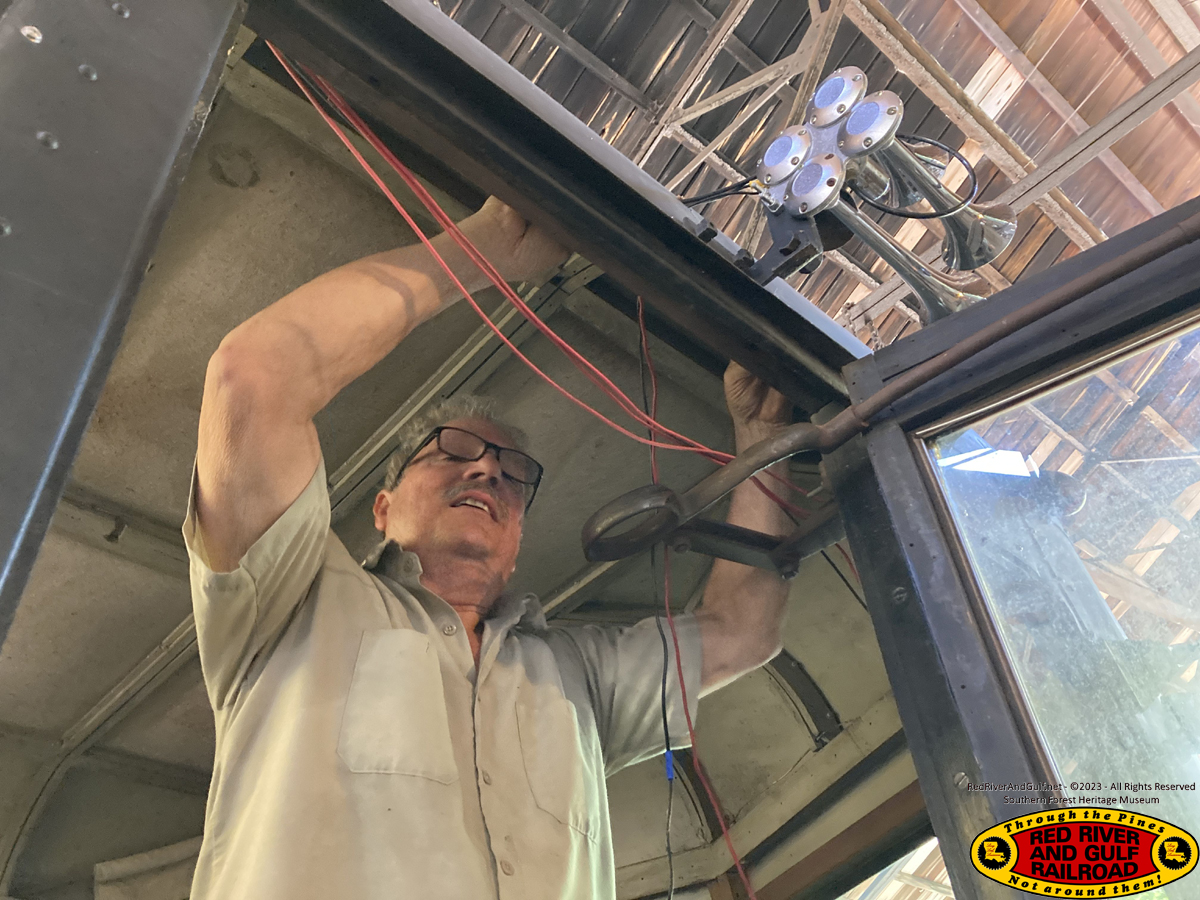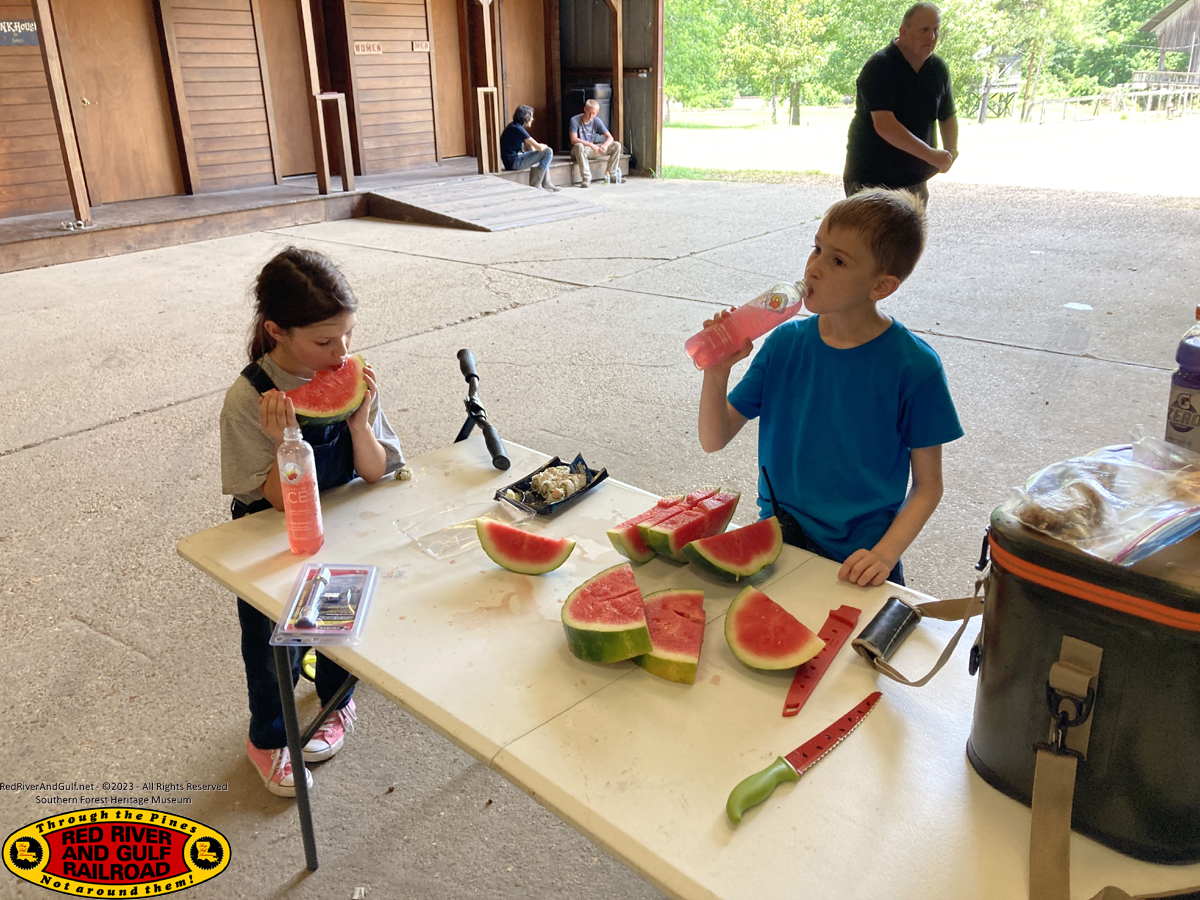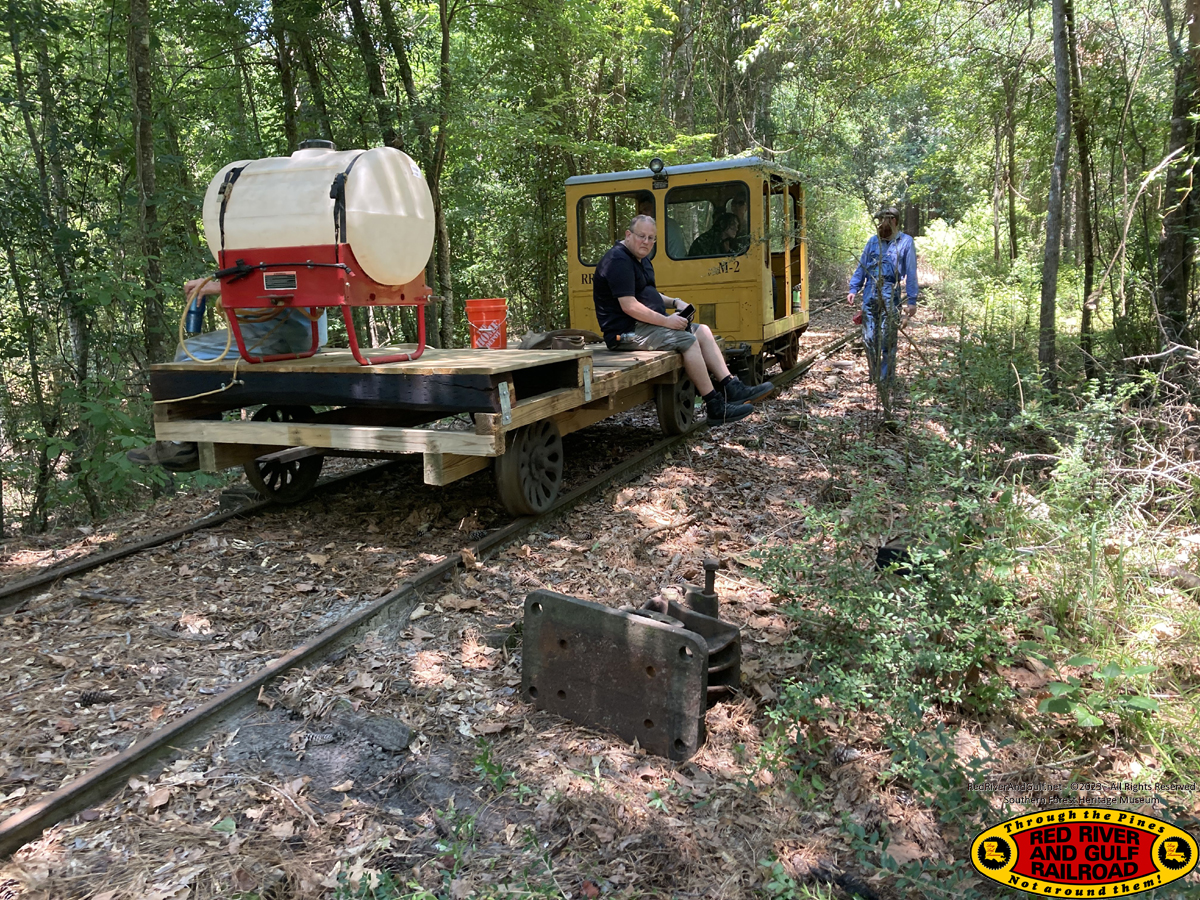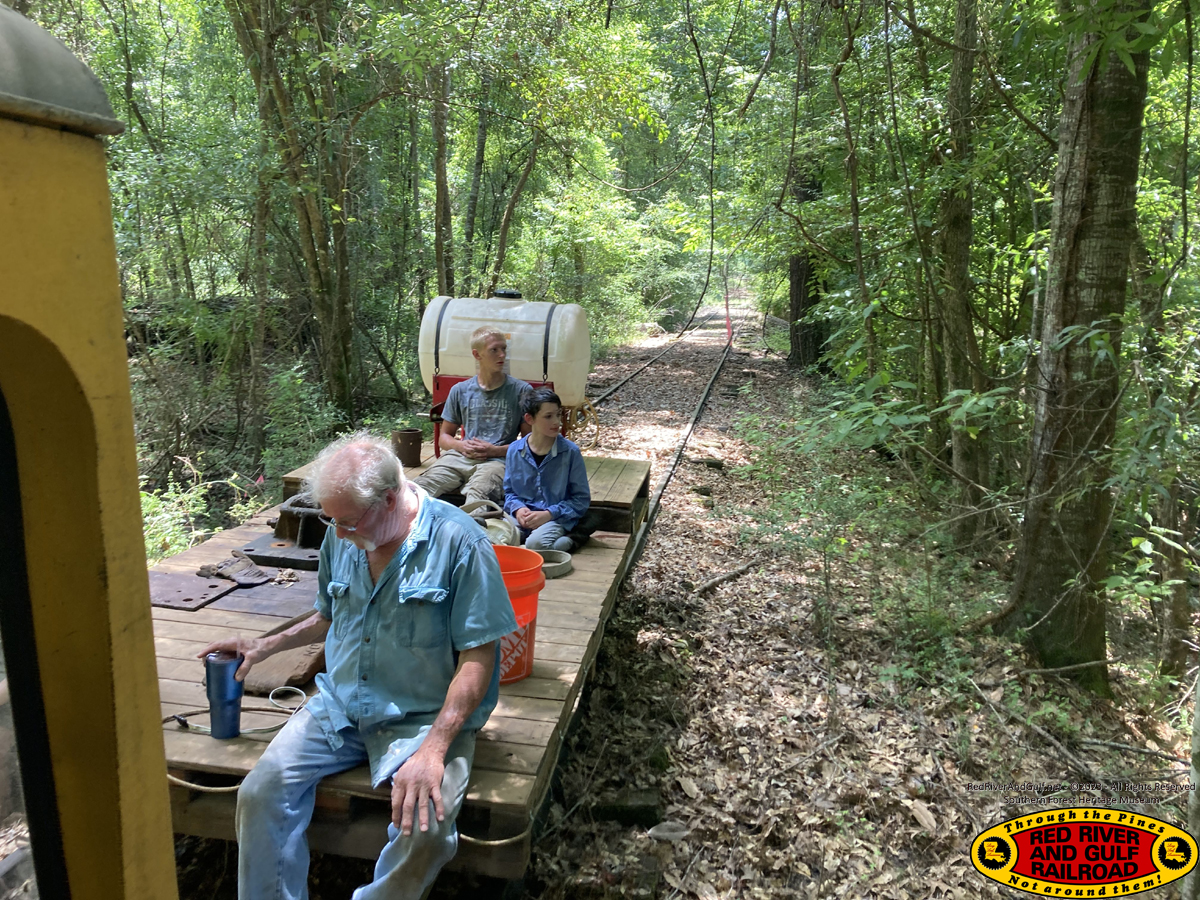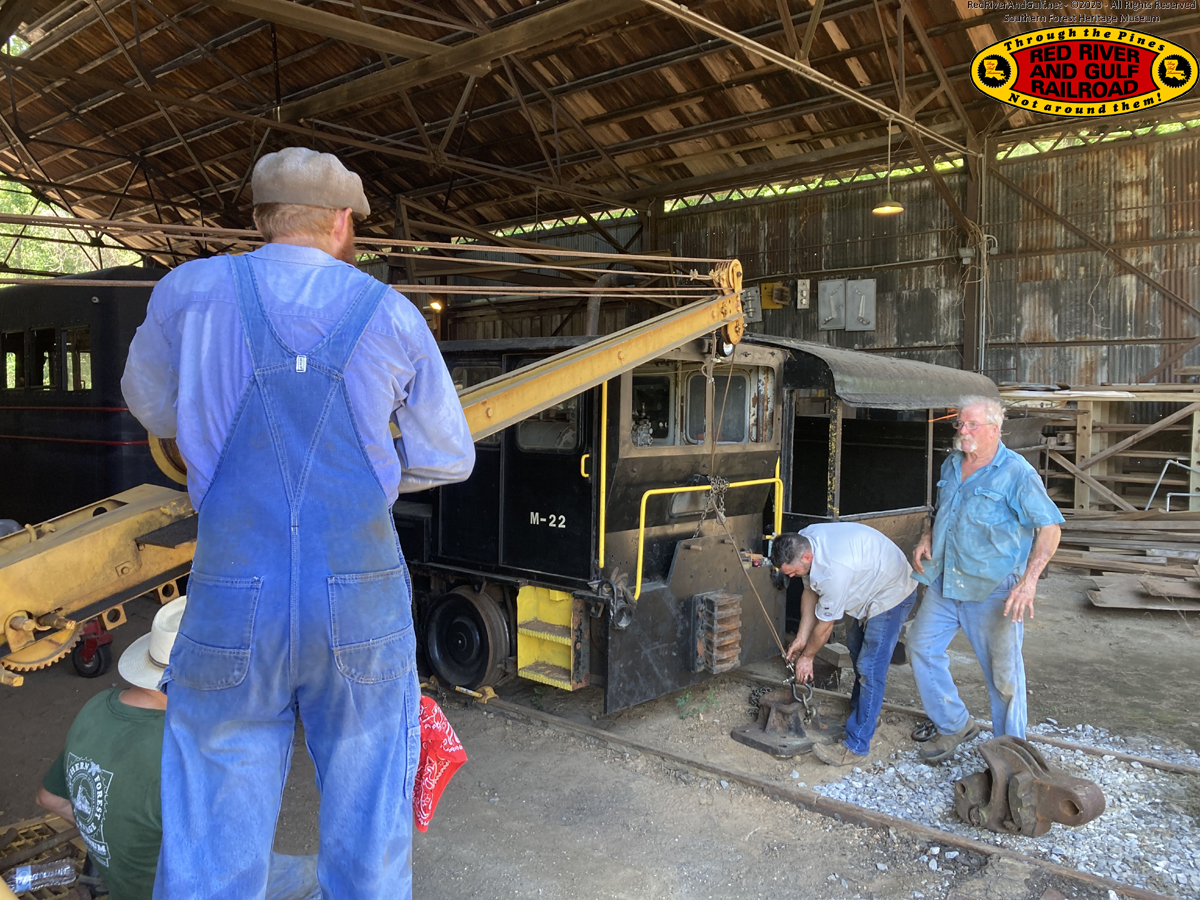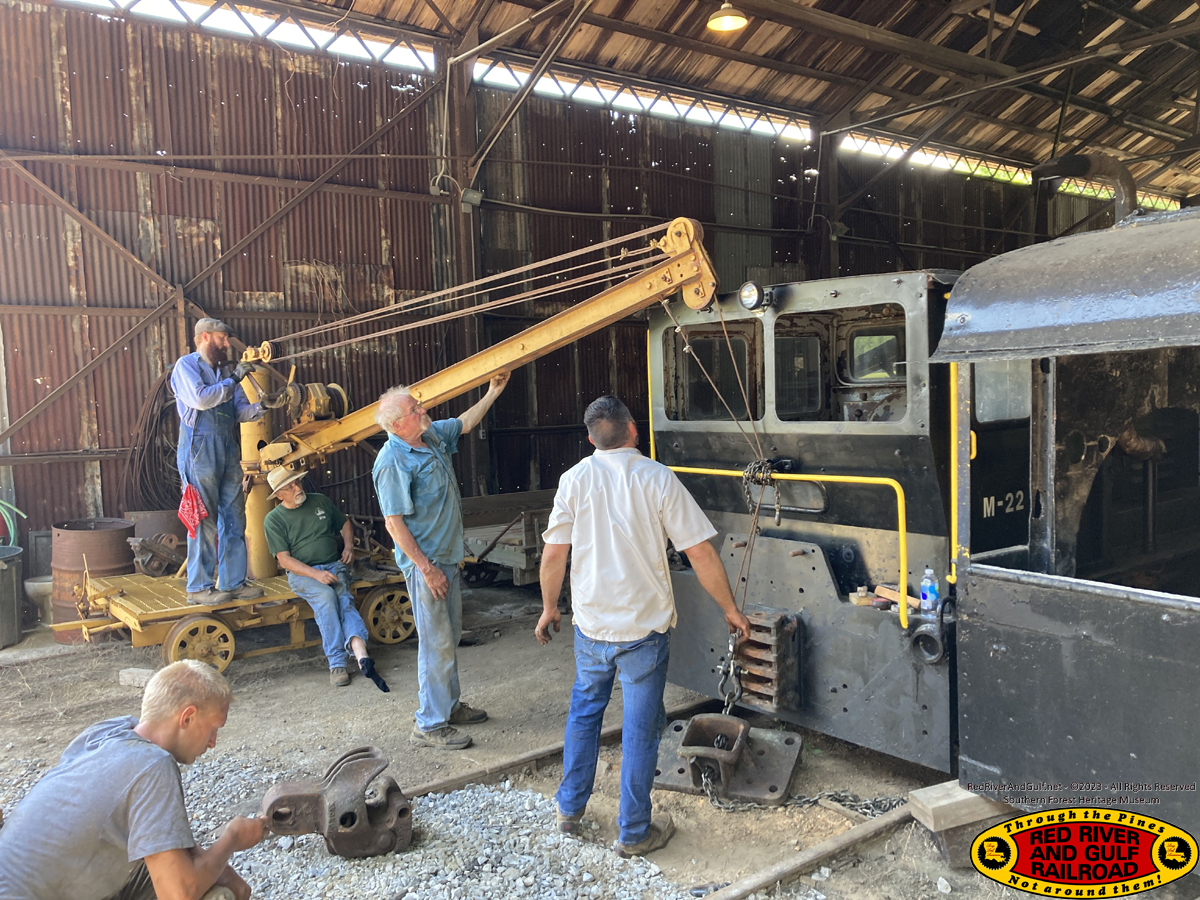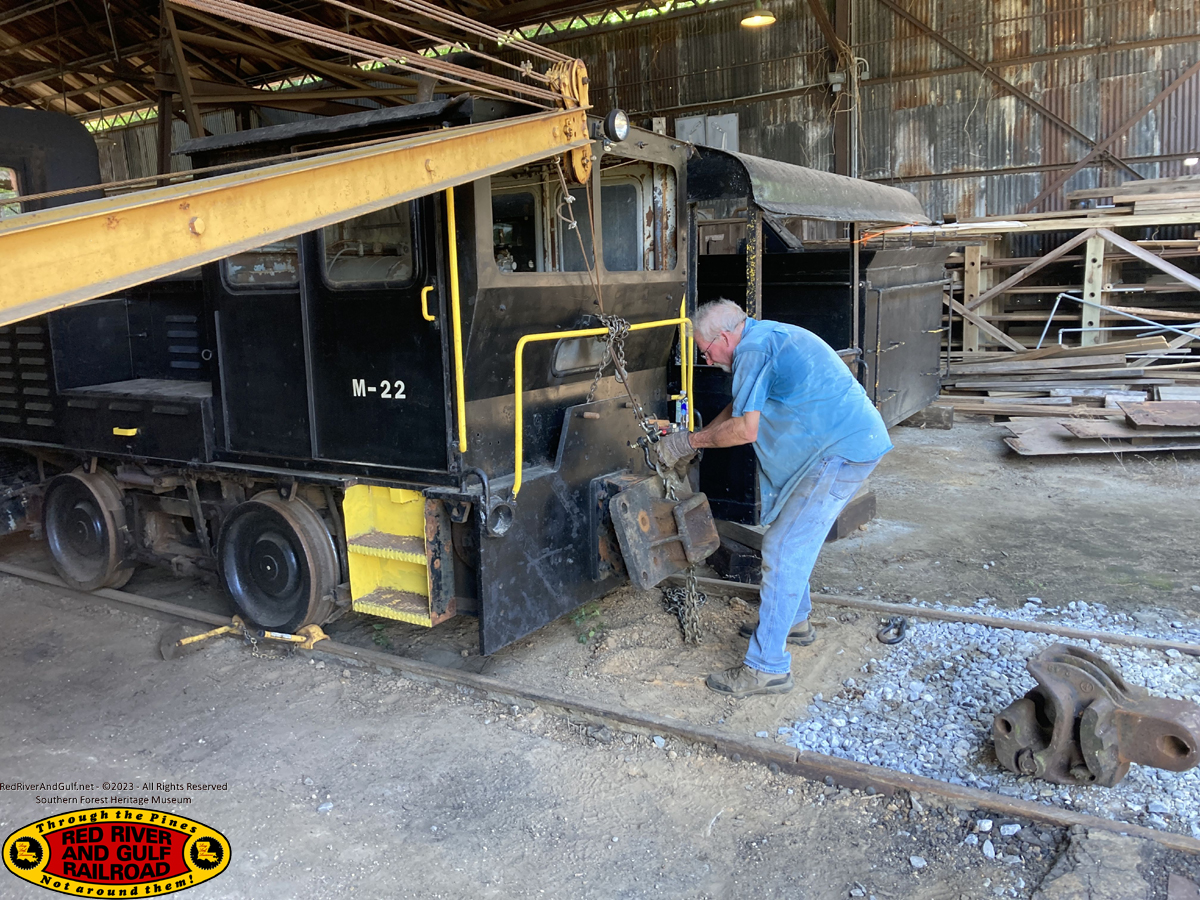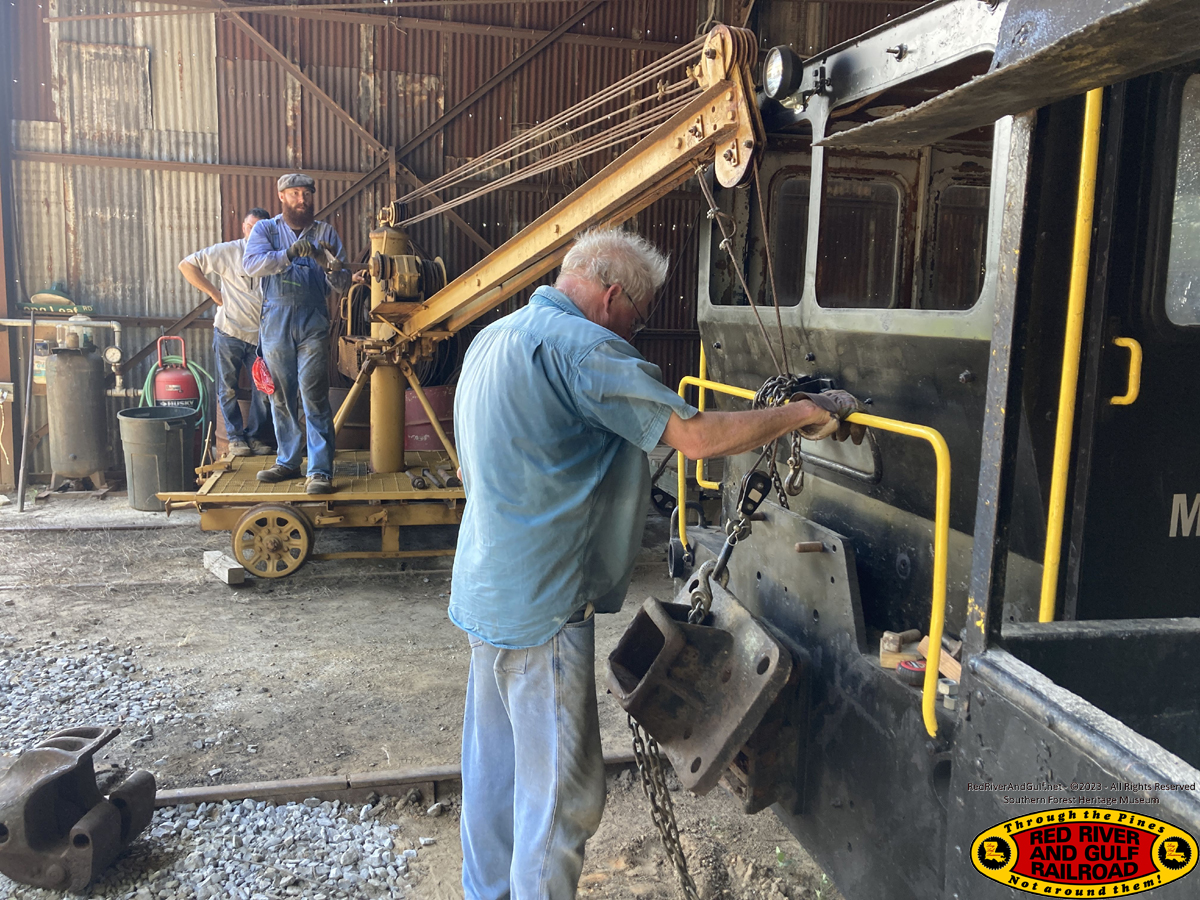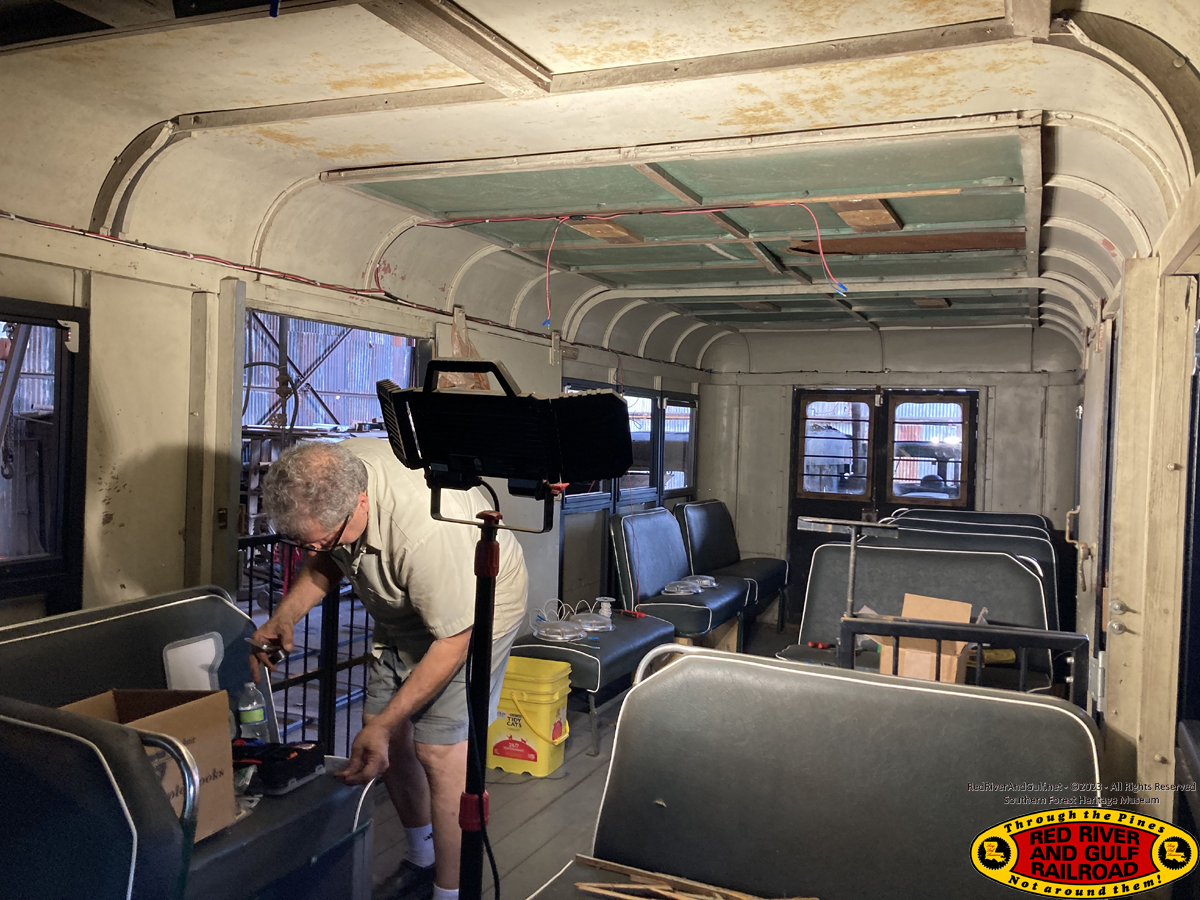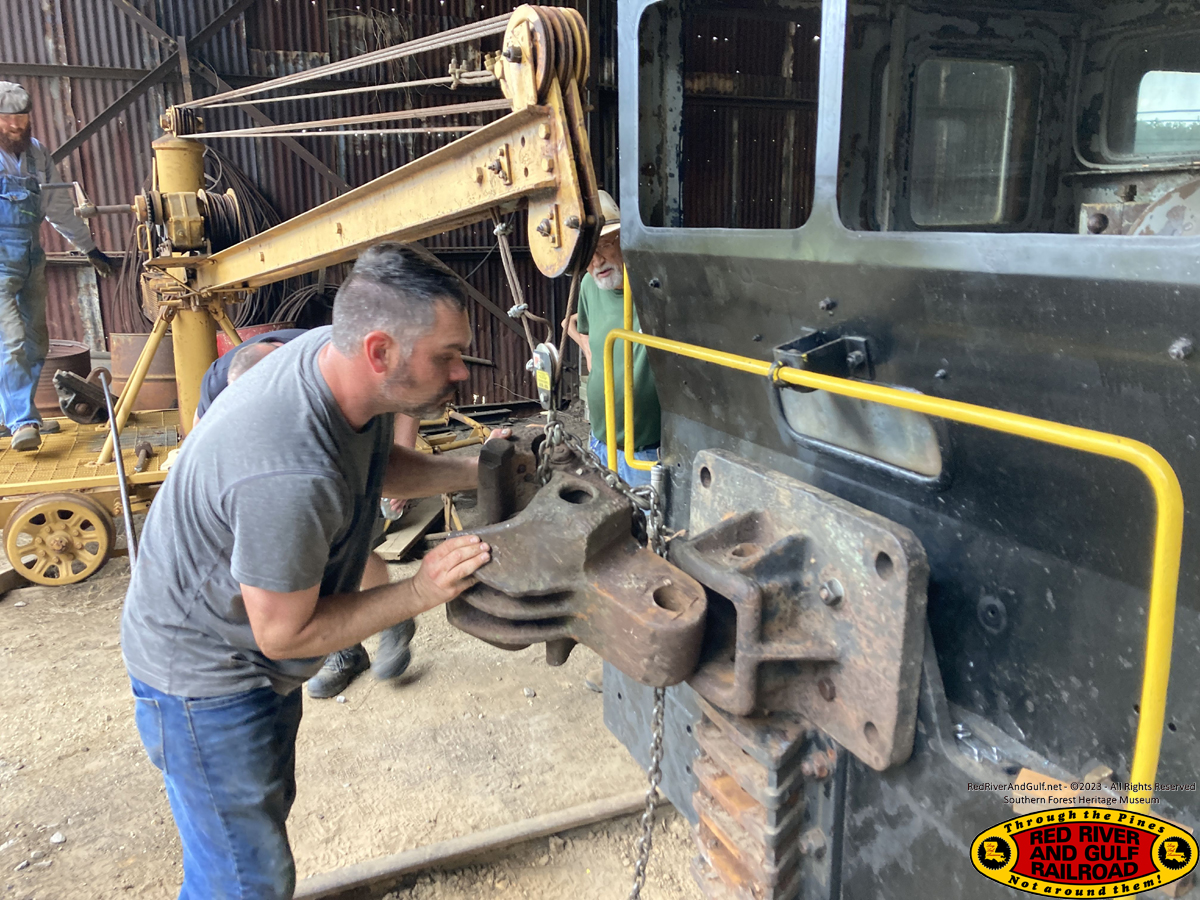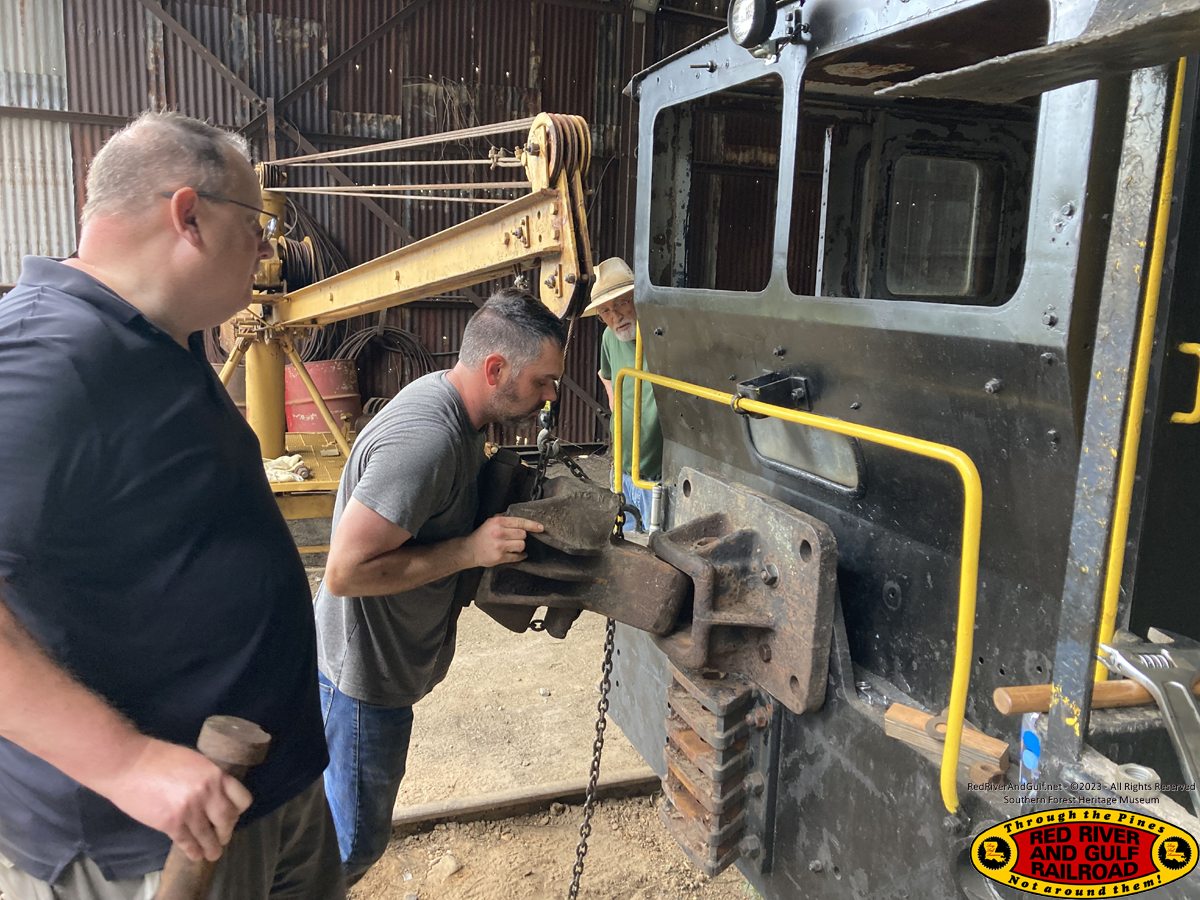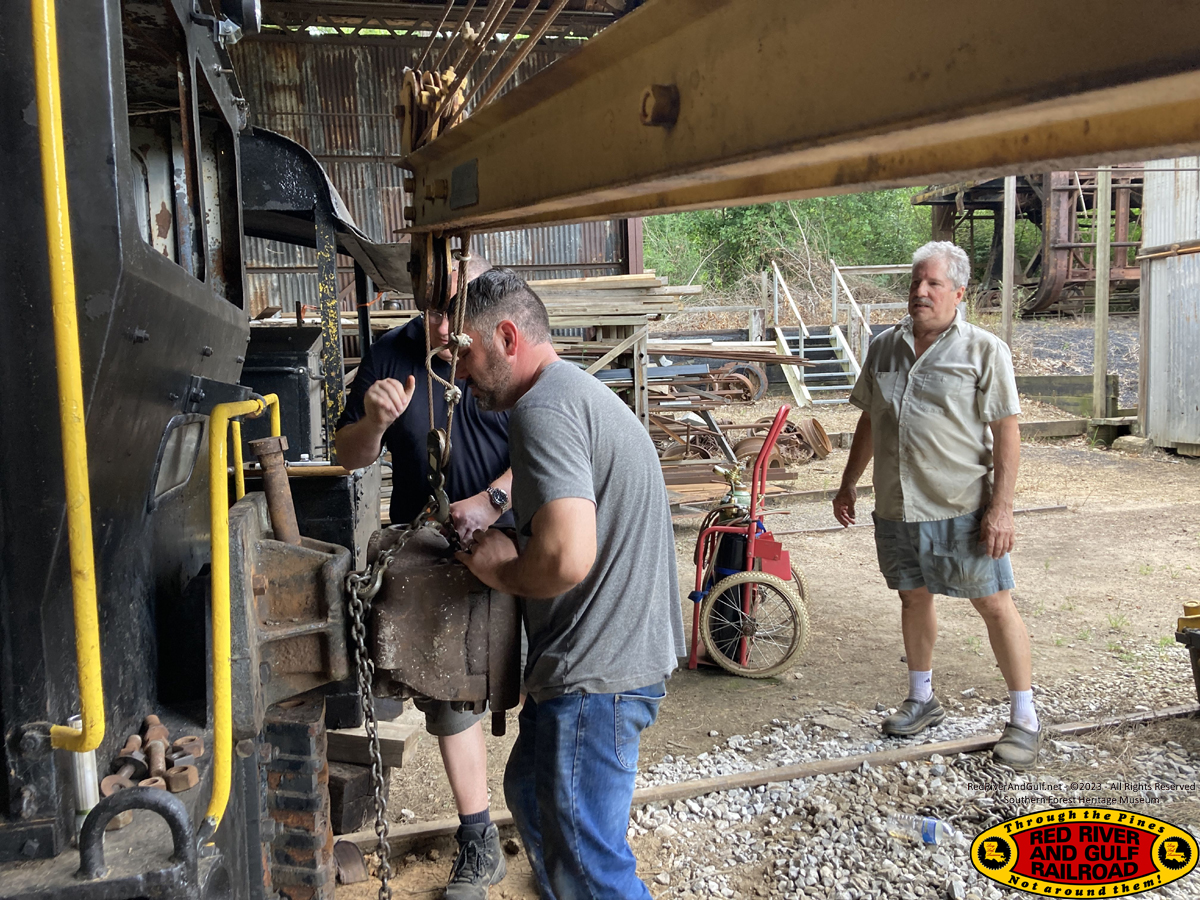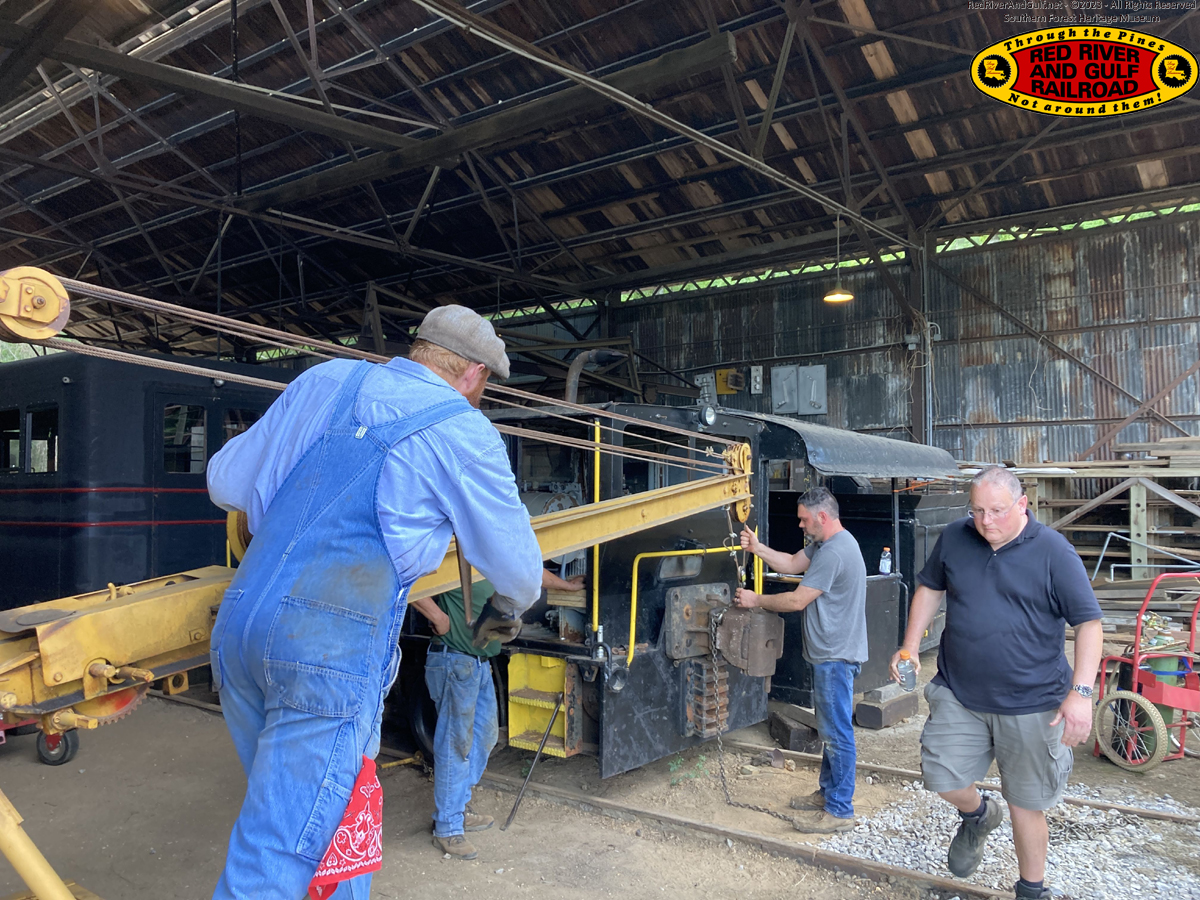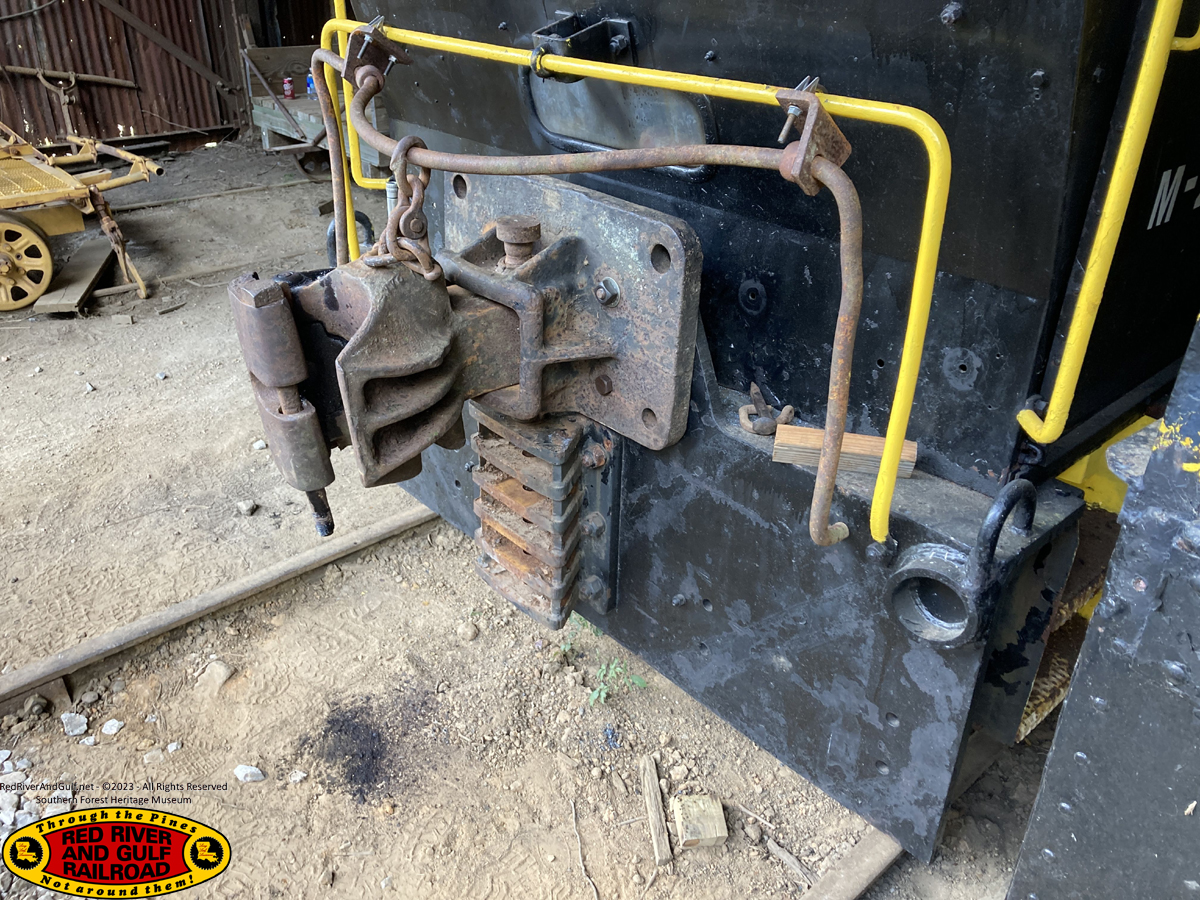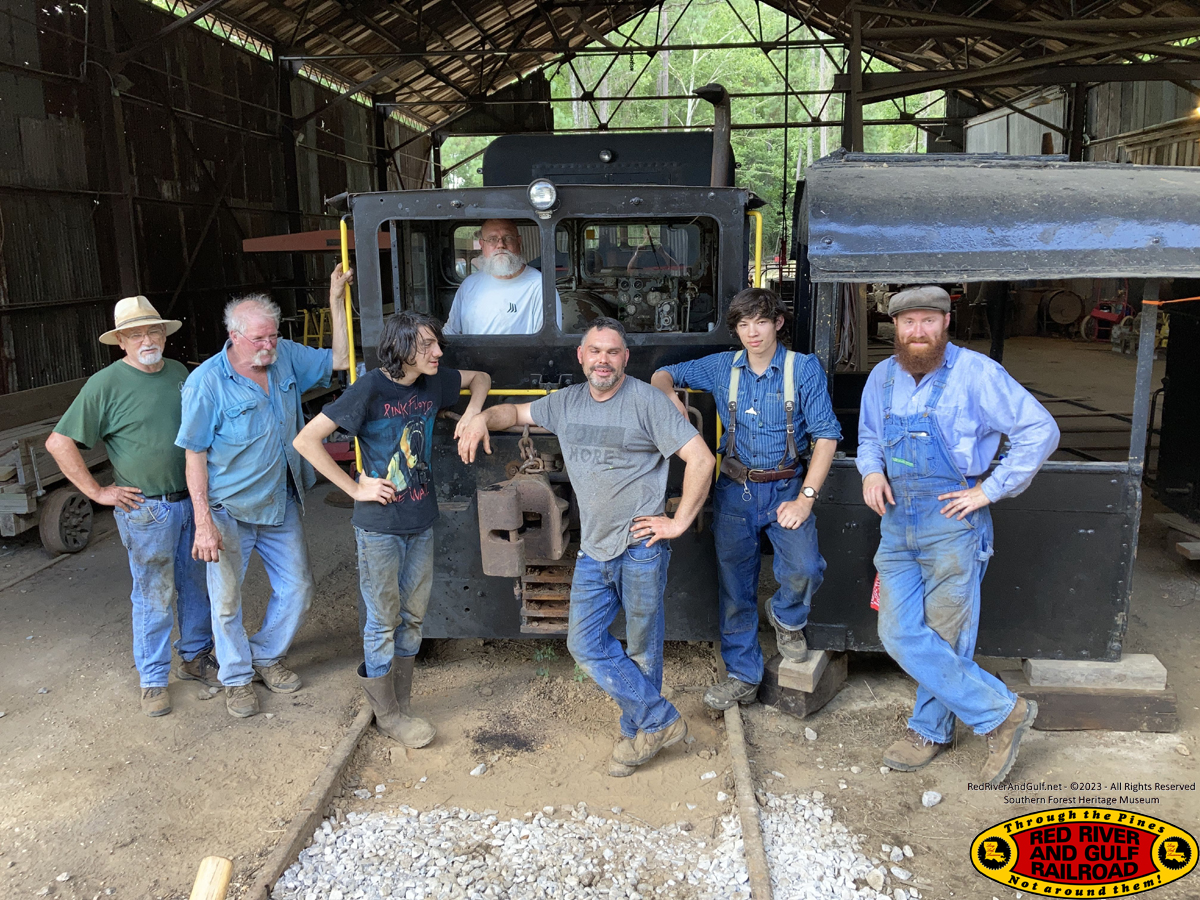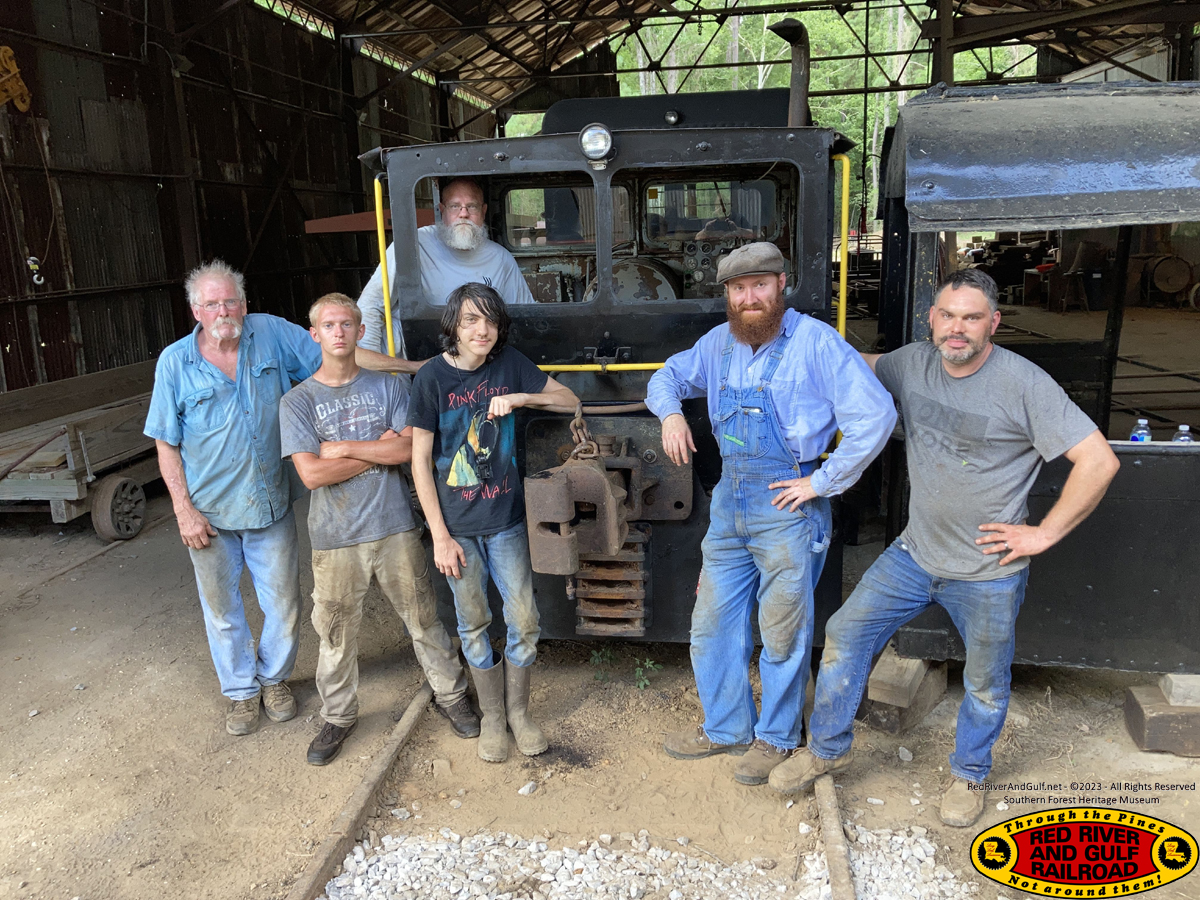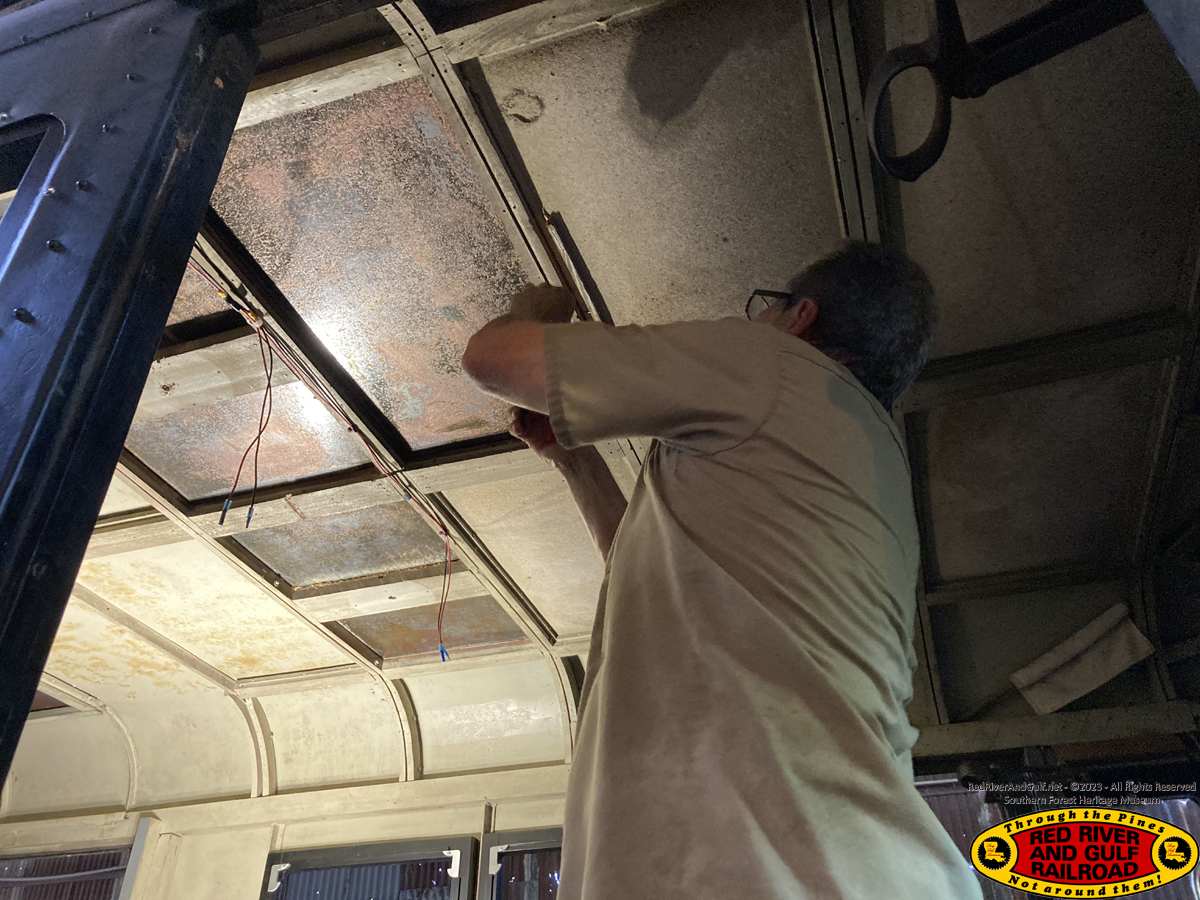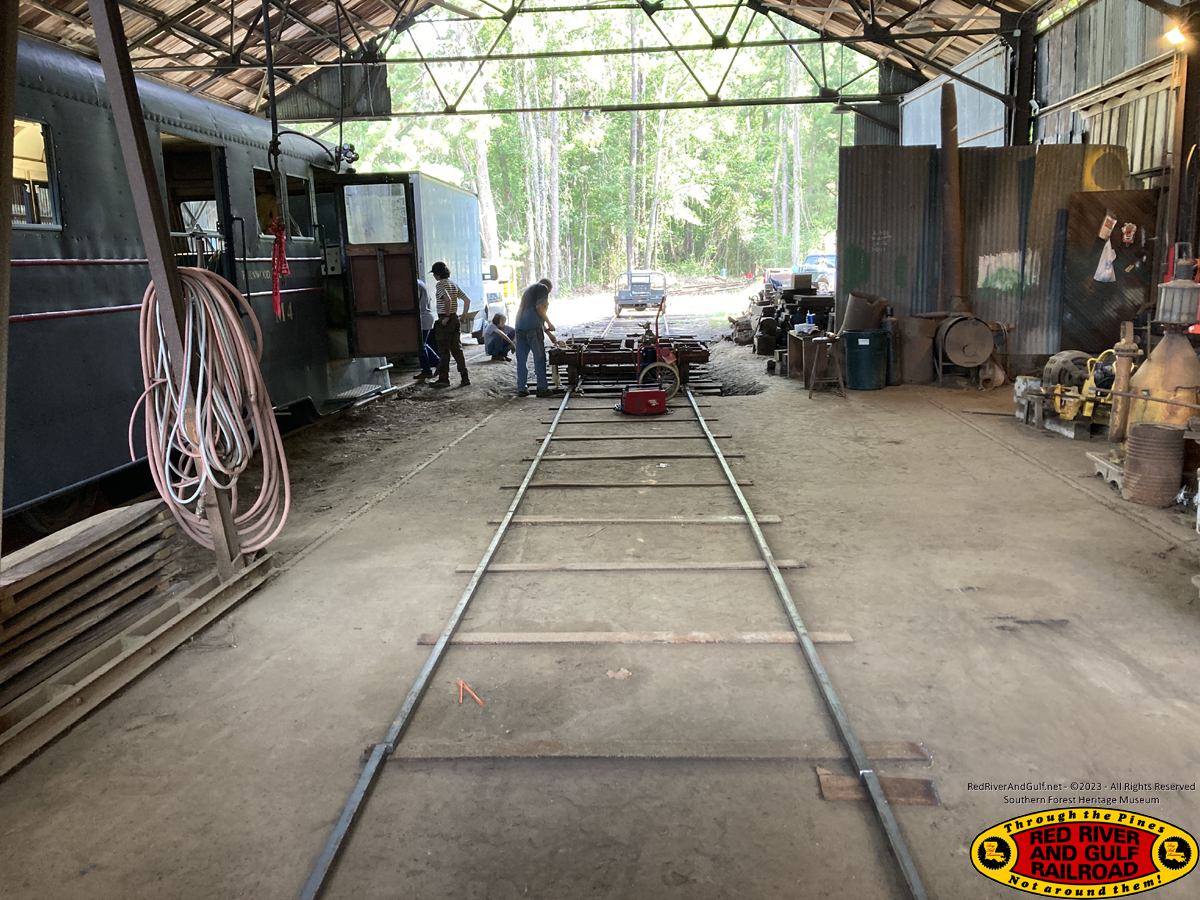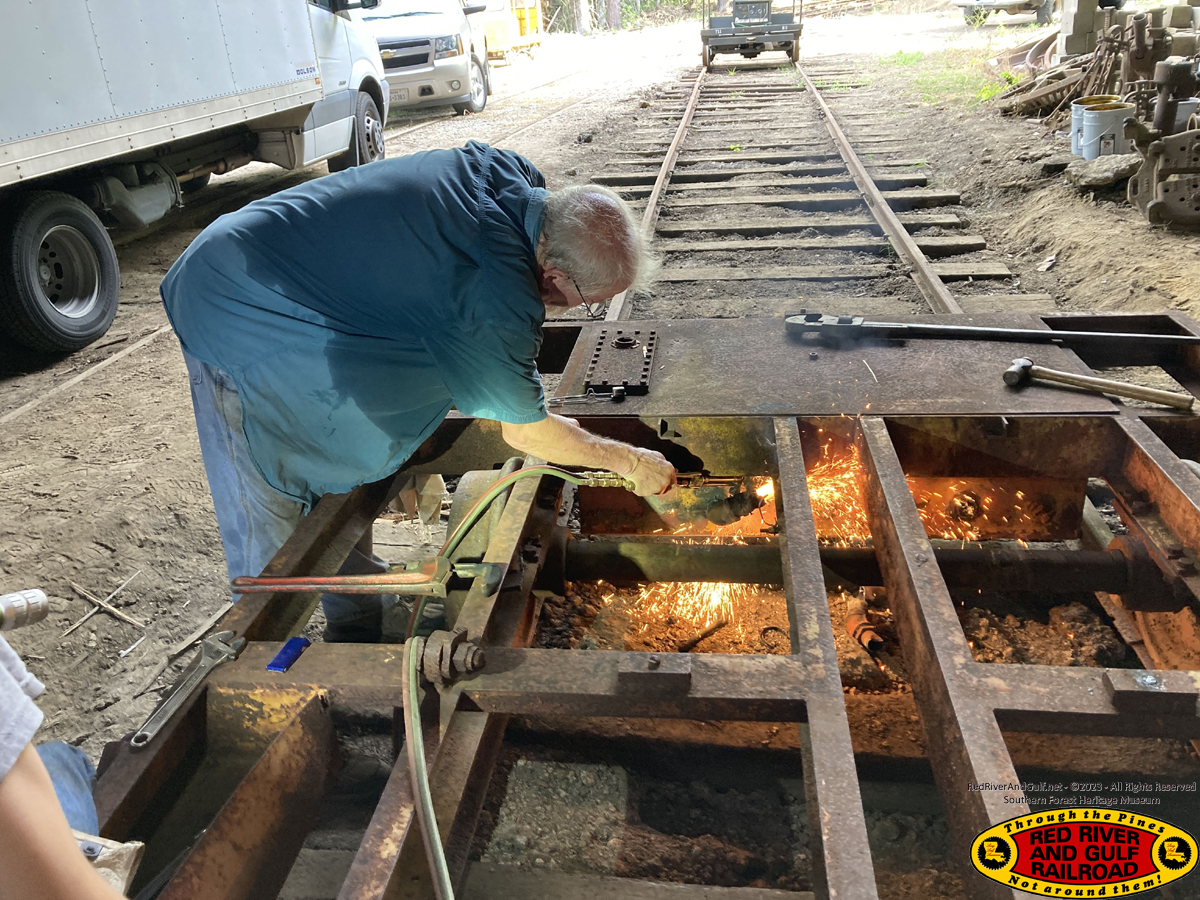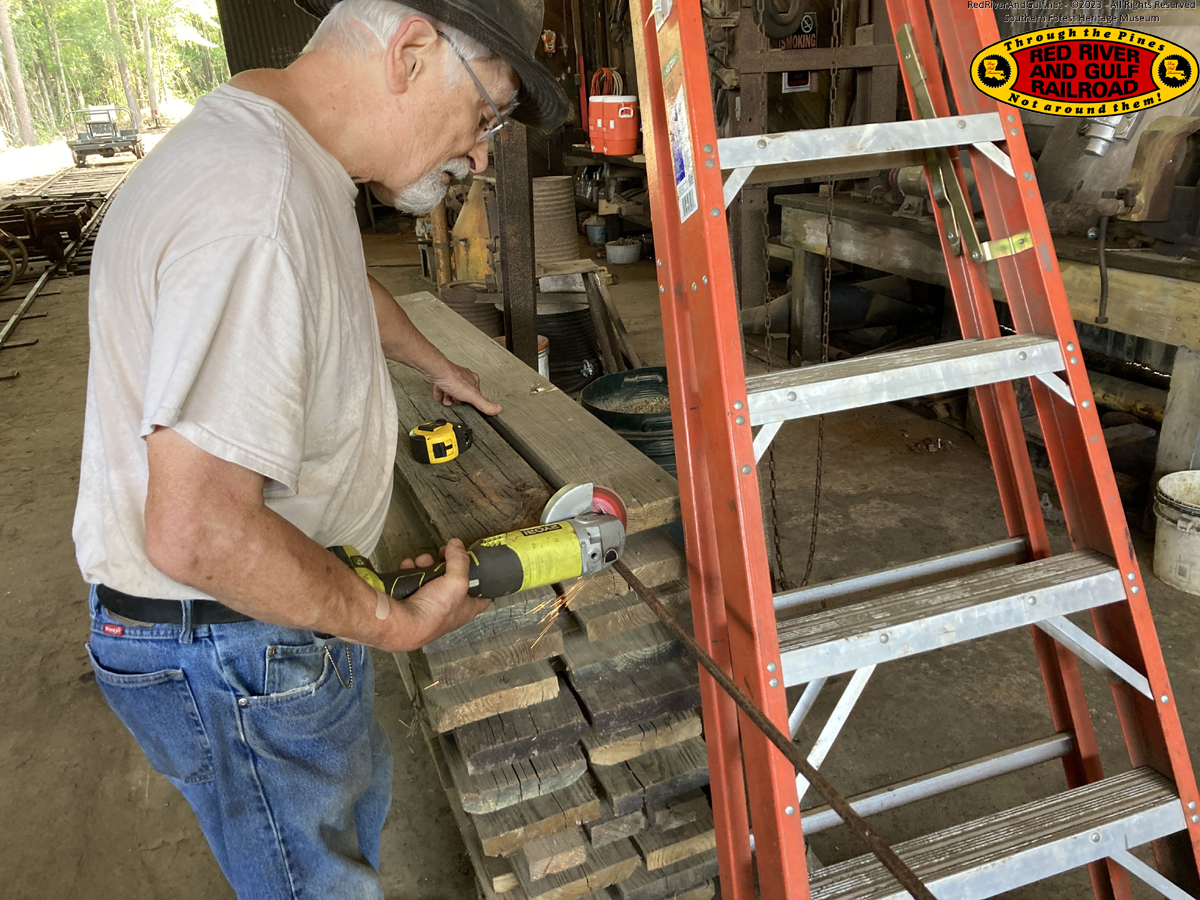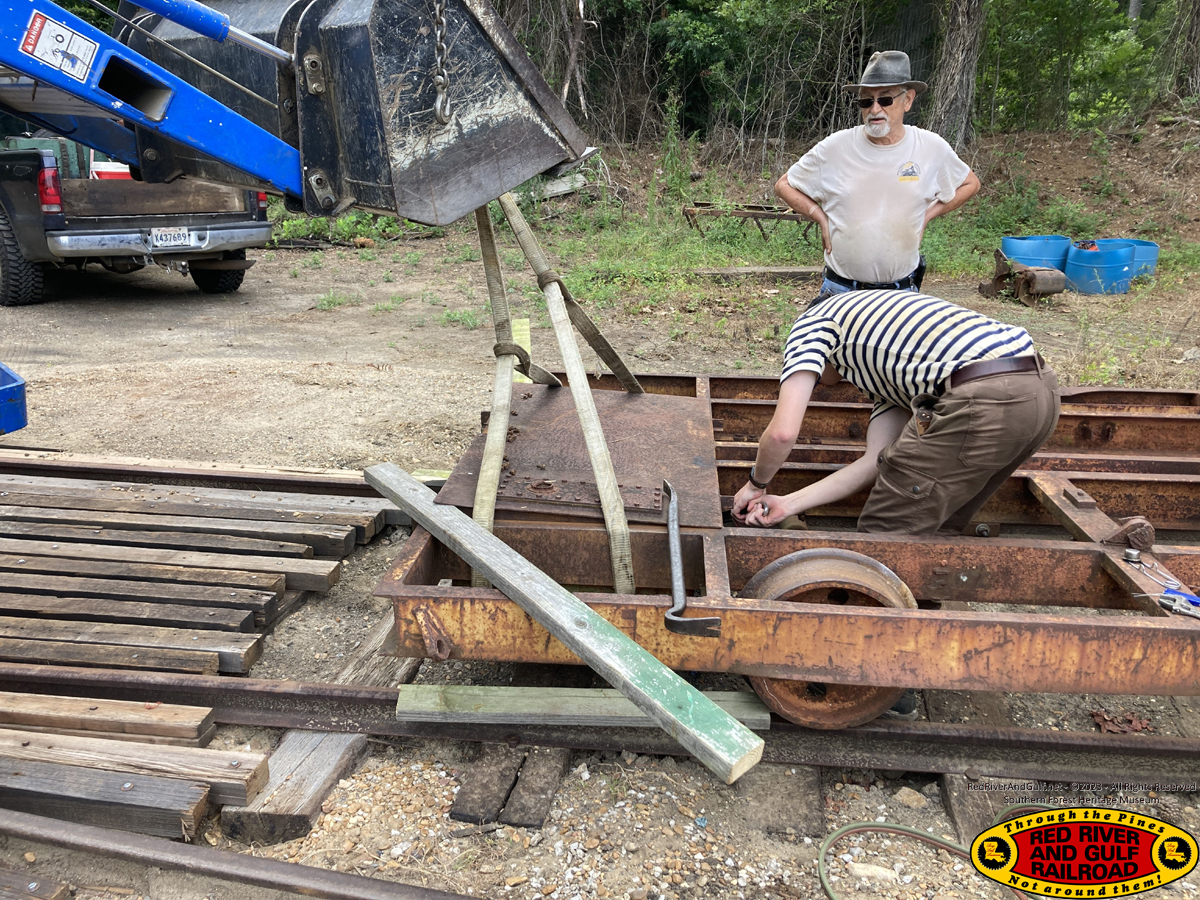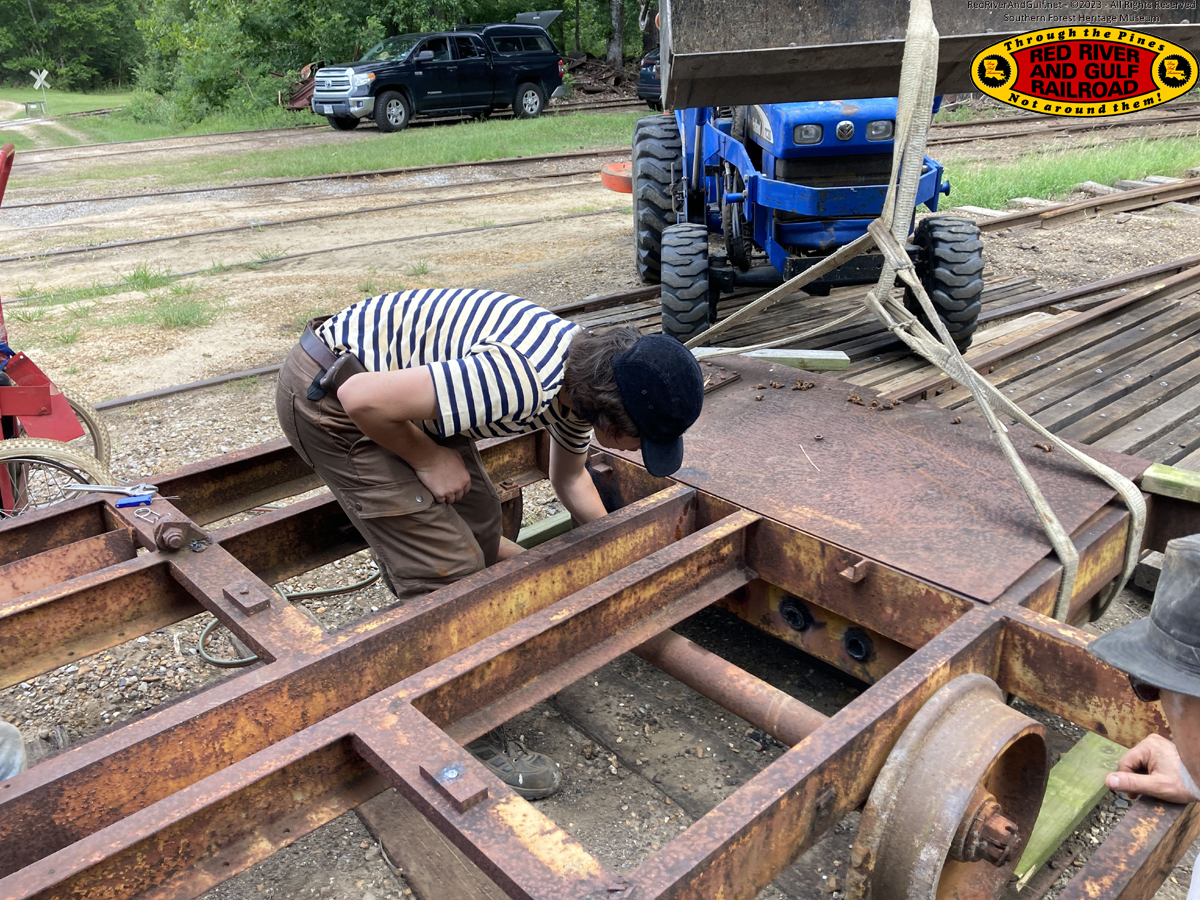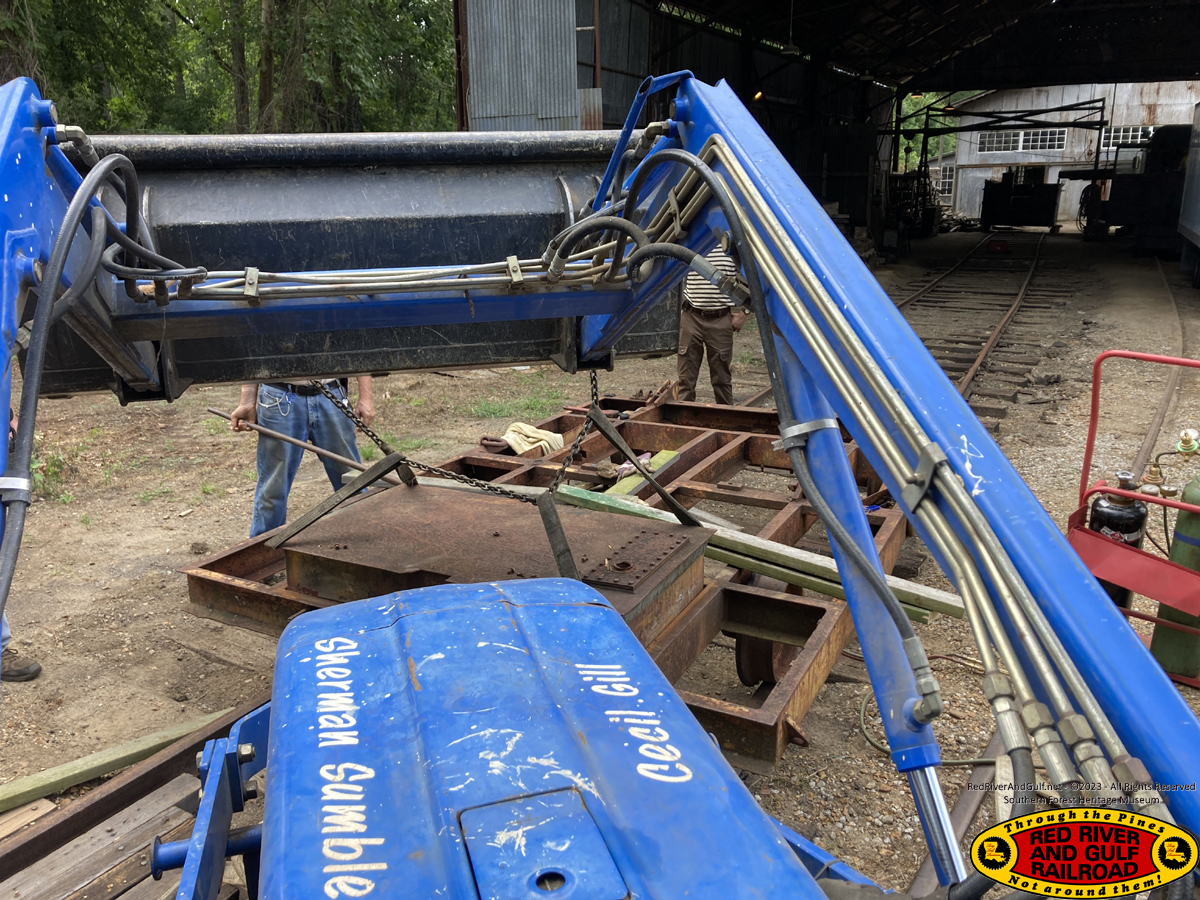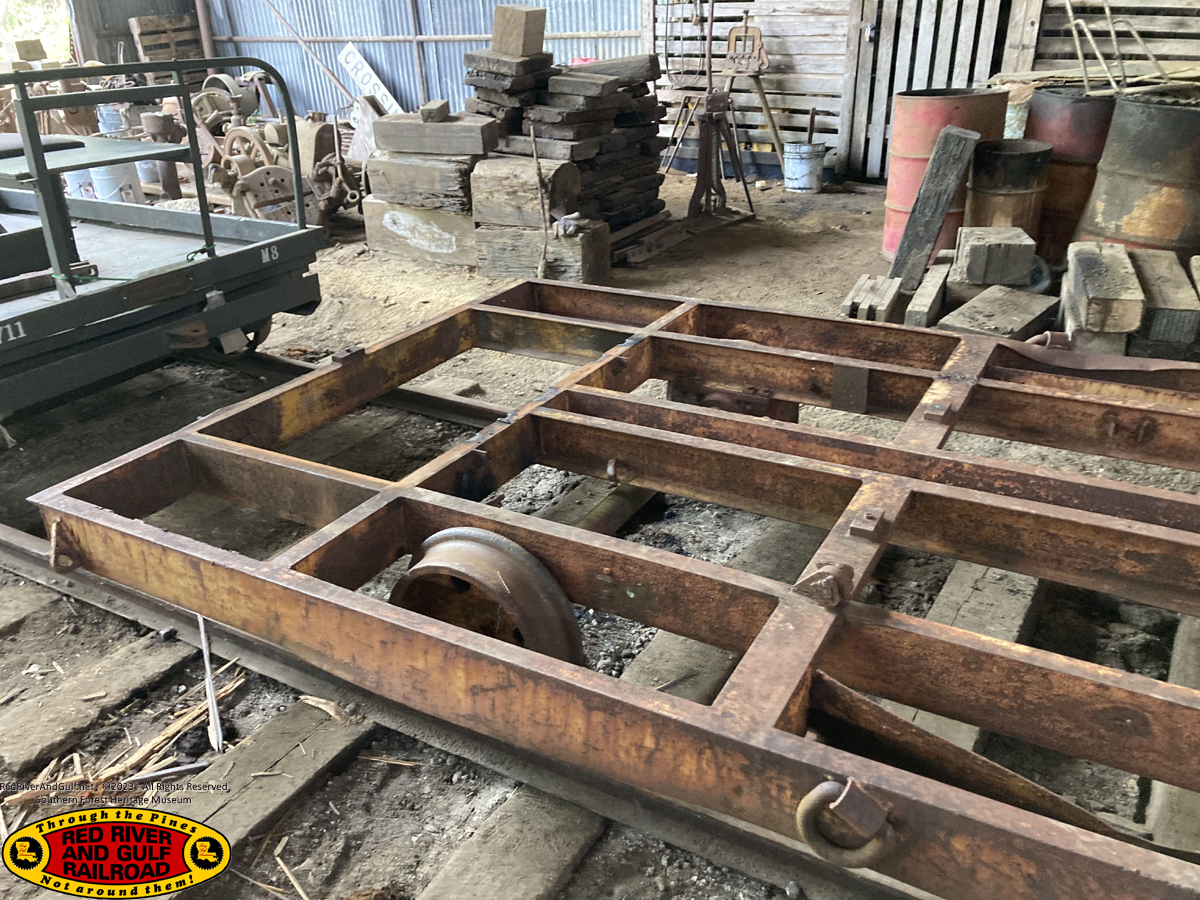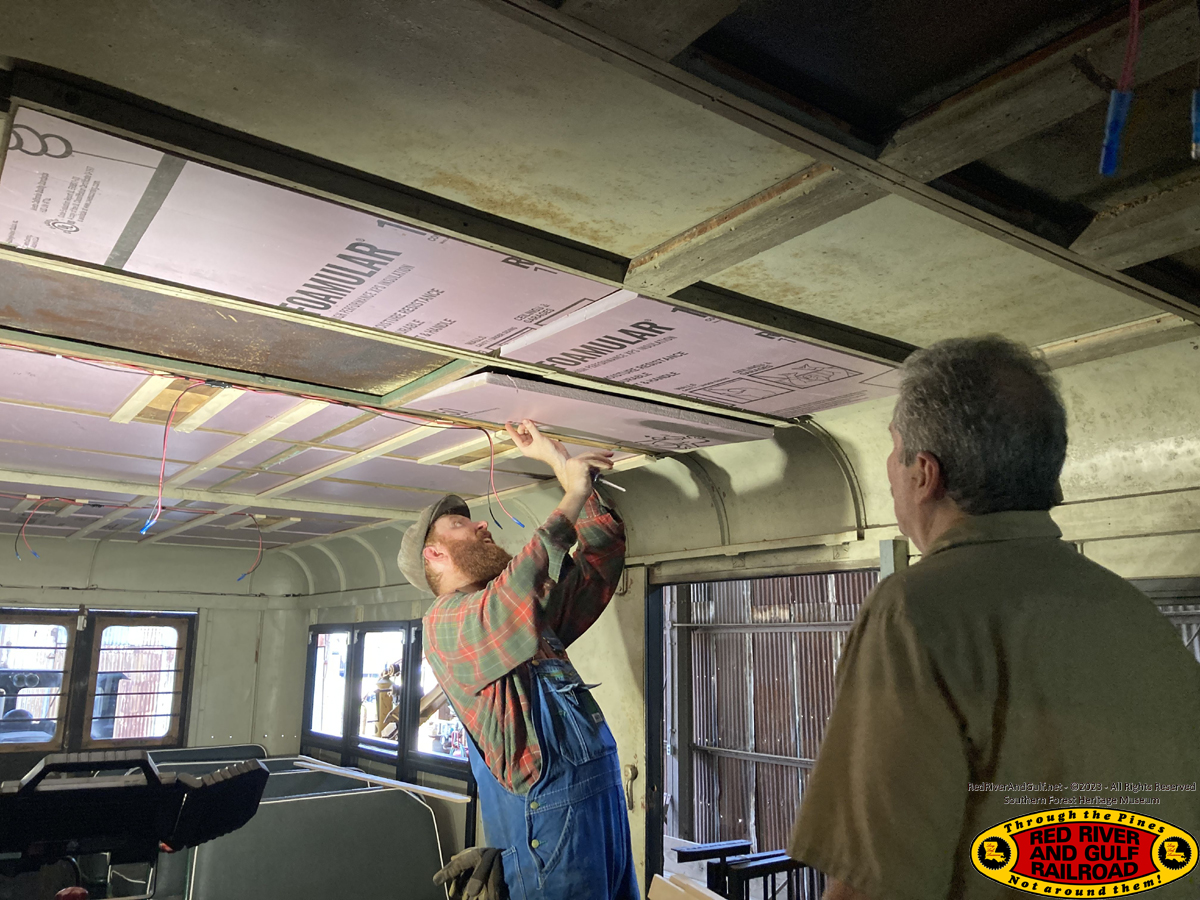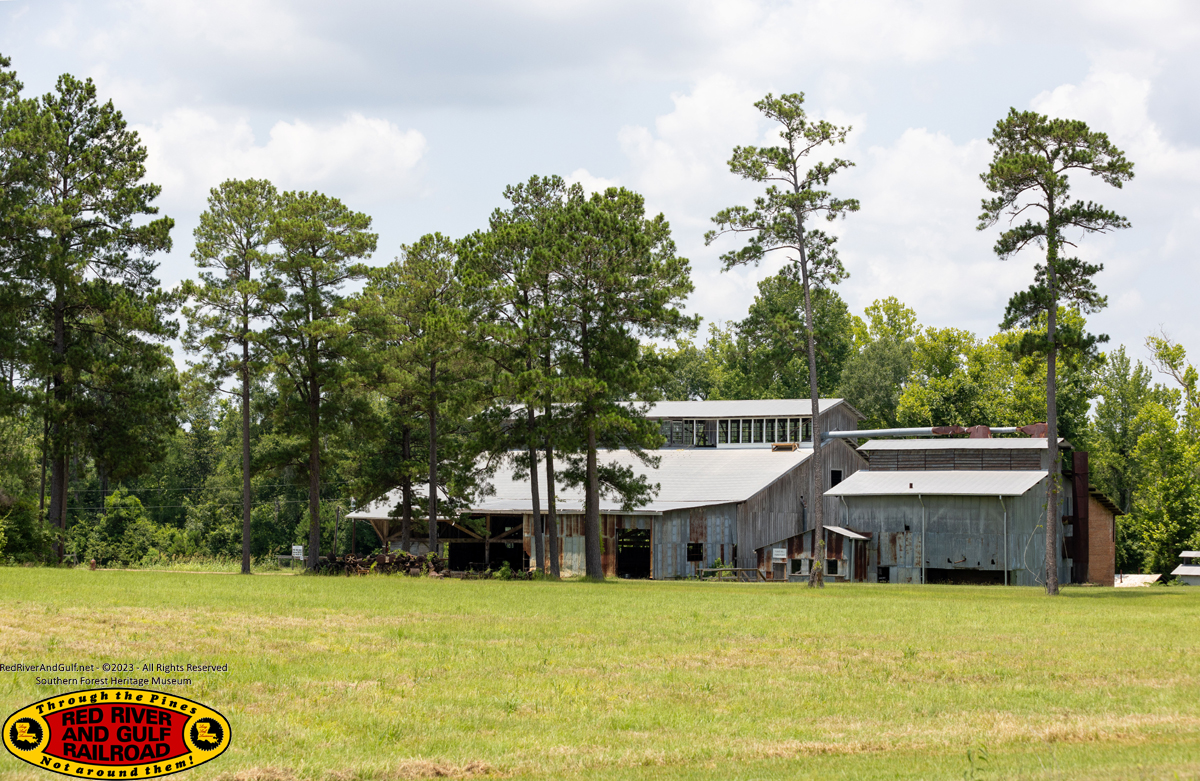|
Volunteer Railroaders
1. Jason R.
2. Everett L.
3. Mike M.
4. David H. Sr.
5. Kira S.
6. Ayden S.
7. Joseph S.
8. Gavin R.
9. Nick P.
10. Wimbley V.
11. Glen A.
12. Leo P.
13. Tucker B.
Accomplishments
1. Bar stock and plates cut & positioned for Engine House track #3
extension
2. Coupler and cut lever installed on M22 locomotive
3. Maintenance on new MOW flatcars
4. M4 rewiring completed
5. M4 ceiling insulation partially completed
6. Car clearances measured on passenger platforms and rolling stock
Thank you to everyone who volunteered this weekend. We were effective in
steady progress on our planned goals and objectives for the weekend.
Saturday
Saturday began with the morning briefing and then splitting up into
various crews. Crew #1 of Glen worked all day rewiring the M4, replacing
wire, routing the wire in better locations, and getting the ceiling
prepped for insulation and ceiling installation. This was meticulous
work, but necessary before we install the interior ceiling and walls.
The work on finishing the interior of the M4 is moving along well and
plans are underway to add an air compressor, air brakes, and sanders in
the near future. We aim to finish the M4 by the fall festival and any
resources, in-kind or financial, to help finish the project are most
welcome.
Crew #2 of Jason, David, and Joseph set to work on the bar stock
extension of the third Engine House track over the concrete pad and
under the A-frame chain hoist. Jason used the museum tractor to bring up
the bar stock to the Engine House. Everett procured the bar stock from a
supplier in Alexandria. Mike M. brought it out to the museum earlier in
the week. The crew cut ⅛ inch metal plate into “metal ties” to place on
the concrete. They then set to work welding the 1 inch bar stock to the
metal plates. After some preliminary work, they determined a bigger
welder was needed to appropriately weld the bar stock to the plates. The
plan is to finish this track at the next session later in July. This
will provide more covered track that is primarily geared for maintenance
and work on light equipment.
Crew #3 of Everett, Leo, Wimbley, and Nick set to servicing, repairing,
and initial maintenance on the newly acquired MOW cars from Port Allen.
Wimbley and Nick used M8 to bring each car over to Engine House track #3
where each car was given a thorough servicing, including oiling the
journal boxes. The wood framing on one that had been a sugarcane car was
removed, giving us a flat diamond-plate metal-deck car, ideal for MOW
use. With each car finished, the cars were placed on the car knocker
shed lead track.
Crew #4 of Tucker, Ayden, and Gavin went hunting for the right coupler
to mount on the rear of the M22 Plymouth locomotive. After searching on
the Saw Mill pad, behind the Engine House and Machine Shop, and out in
the woods, a coupler was located at Alco locomotive #3 tender in the
woods of the wye. With much effort, the coupler was rolled and dragged
through brush up to active track, a process that took all morning.
During the morning, David, Wimbley, and Nick measured clearances for the
various steam locomotives and rolling stock compared to the passenger
platforms at the museum. The goal was to size up how much clearance work
was needed in the future at these platforms.
After lunch, all the volunteers joined up to work on the coupler for
M22. All boarded M2 and the herbicide sprayer car and headed down the
wye. After separating the coupler components, the parts were loaded up
on the herbicide car and the crew headed back to the Engine House. Back
at the Engine House, a link and pin coupler retrieved from Port Allen
was placed on the front of M22. Two of the former cane cars have link
and pin couplers, hence the use of that kind of coupler on M22.
On the rear of M22, the ¾ size coupler was removed with Gavin and Ayden
lifting it out of the way. It was too low and too small for the standard
couplers on the equipment at the museum. David and Joseph used the torch
to make new bolt holes so the alignment with the new coupler pocket and
housing would be just right. Everett and David then located bolts,
washers, and nuts from the various parts rooms around the Engine House
and Machine Shop. Using Ichabod (the crane), the new coupler pocket was
lifted and bolted to M22. The process took time, even with a bolt or two
falling into the “black hole” that was the empty space down by the air
tank, requiring effort to “fish it out.” With the coupler pocket placed,
the coupler itself was then maneuvered into place with the aid of the
crane.
With the coupler assembly placed on the rear of M22, the next step was
servicing the knuckle. Years of rust had accumulated. After heating with
the torch, some knocks with a sledge hammer, and plenty of oil, the
knuckle was completely freed up for operation. The final step was to
install a cut lever, also retrieved from Port Allen. After some
straightening of the cut lever handles, the cut lever was installed with
the addition of several links to the chain that pulls the knuckle pin.
This gave us a fully operational standard height and size coupler and
cut lever for M22. This was a needed step before moving any larger
rolling stock with M22 at the museum.
With the coupler work complete, clean up of tools and equipment was
handled, discussions were had on servicing the maintenance of way car
from Port Allen, and heading for rest after a long, hot day.
Sunday
Sunday morning, the volunteers again worked in groups. Jason and Glen
finished the last of the wiring on M4. Jason noticed that some marker
lights needed replacement, and made plans to replace & upgrade them at
the next volunteer session. David had brought another welder for use on
the bar stock track, but determined that it was not handling the job
appropriately, agreeing that a different welder would be needed. Tucker
and Ayden positioned the last of the bar stock and metal plates. Wimbley
and Nick took M8 out on the Sandersville line to remove overhanging
branches and limbs. Everett began work on the maintenance of way car
retrieved from Port Allen.
At mid-morning, Tucker and Glen started work on installing one-inch
thick insulation on the interior ceiling of M4. The insulation, cut to
size for each ceiling “compartment” was held up by plywood slats, cut to
size as well. The plywood slats would then give a good base to attach
the interior ceiling material. This was a good deal of measuring,
cutting insulation, fitting into place, cutting plywood slats, and then
screwing these slats into place. Two-thirds of the M4 ceiling was
completed on Sunday with the remainder to be finished later in the next
week.
The crew of Jason, Everett, David, Wimbley, and Nick then began work in
earnest on the maintenance of way car. This car had likely been a
Jackson tamper at some point, given the Jackson serial-number plate,
roller-bearing wheels, hydraulic tank, and gear on one axle, indicating
it was self-propelled. At some point, it had been stripped down to its
frame for conversion to a maintenance of way work flat car. For our
purposes, we plan on finishing the conversion to an all-purpose
flat-deck maintenance of way car. Numerous cuts by the torch were needed
to free the old hydraulic tank that was finally lifted free with chains
by the tractor. This too took much effort from the volunteers working on
it.
Once the MOW car was rolled back into the Engine House, Glen and Tucker
found a stopping point on the insulation work. It was a hot weekend, but
many objectives were accomplished. After dumping the Engine House
garbage cans in the dumpster and cleaning up tools and equipment, the
volunteers headed down to the lodge to clean themselves up. Kira gave
the lodge kitchen a clean as well.
The next session is July 21-23, which will include the primary session
for the Annual Rules Clinic, and continued work on the M4, M22, and
other items at the Engine House. If you cannot make the primary rules
clinic, please contact us today so secondary training dates can be set
up for you and others.
-Tucker "Who Dat" Baker
RR&G Road Master
|
